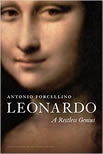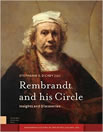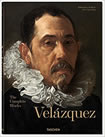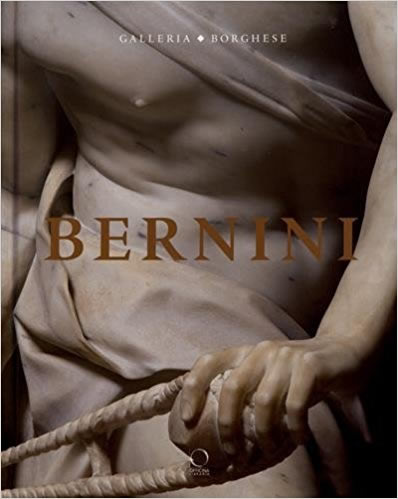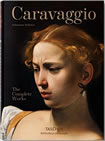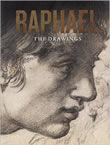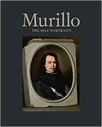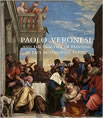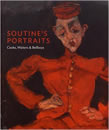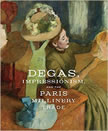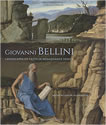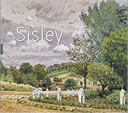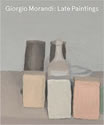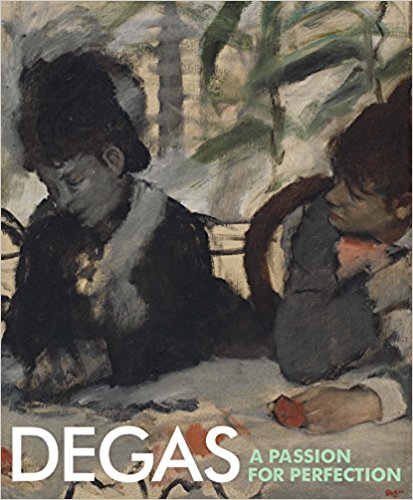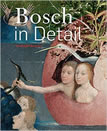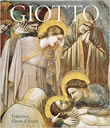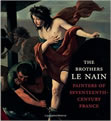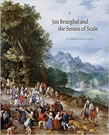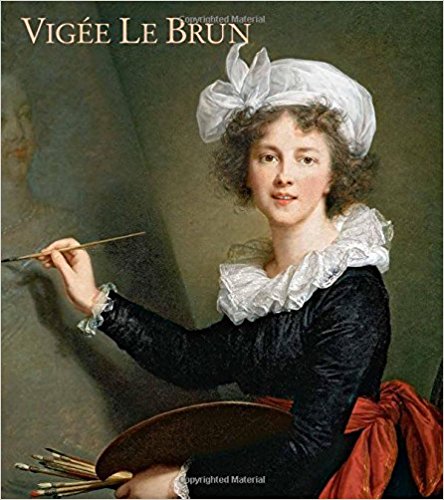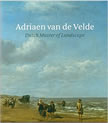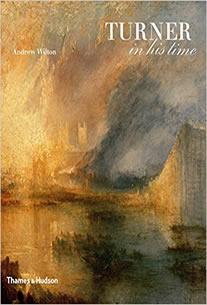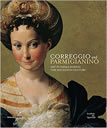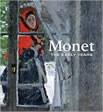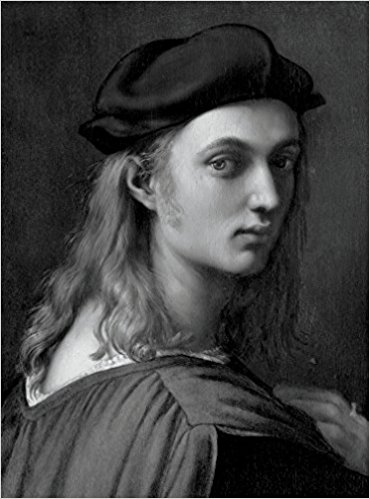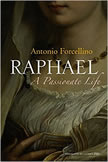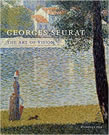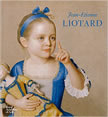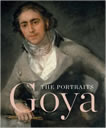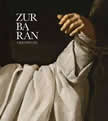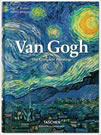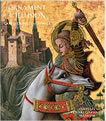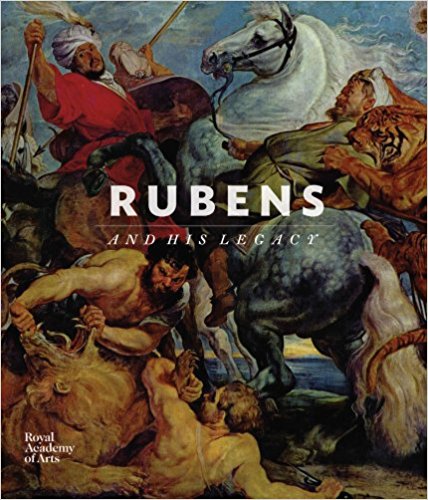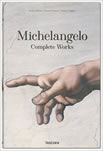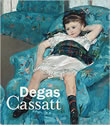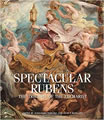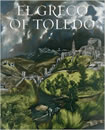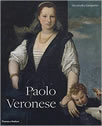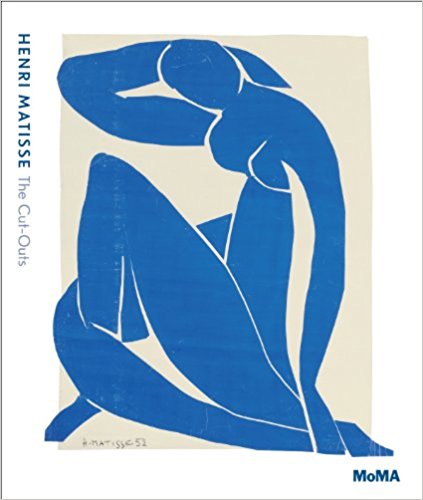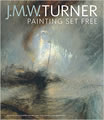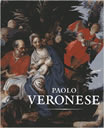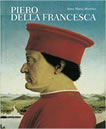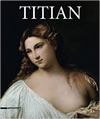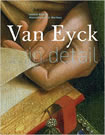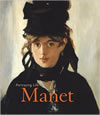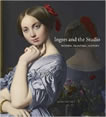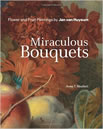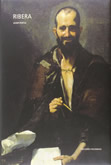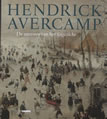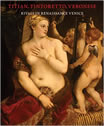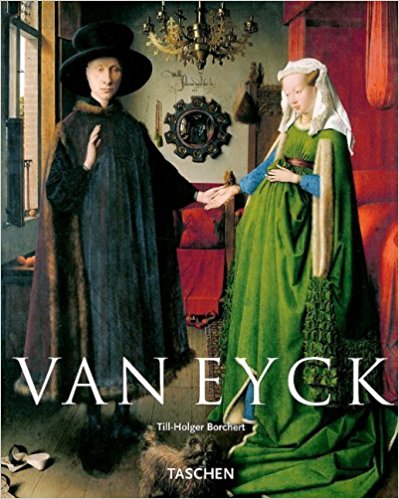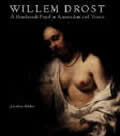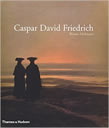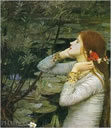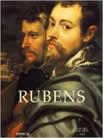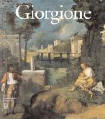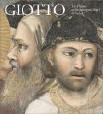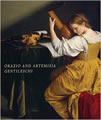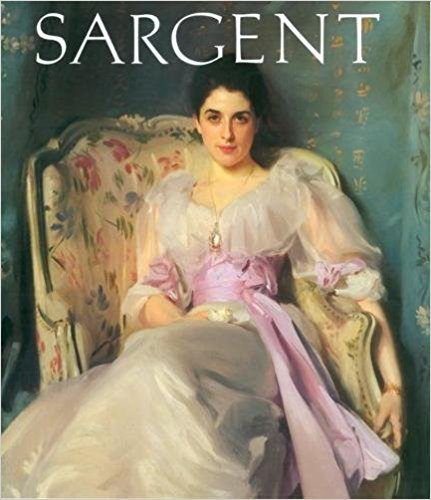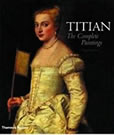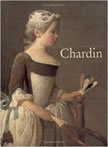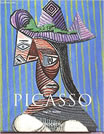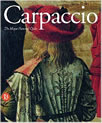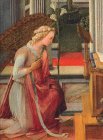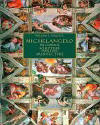By purchasing books via any of the book titles, Amazon.com or Amazon.uk links below, you will be contributing to the growth and maintenance of Essential Vermeer website at no additional cost to your purchase. Thank you.
A visionary scientist, a supreme painter, a man of eccentricity and ambition: Leonardo da Vinci had many lives. The child of a fleeting affair between a country girl and a young notary, Leonardo was never legitimized by his father and received no formal education. While this freedom from the routine of rigid and codified learning may have served to stimulate his natural creativity, it also caused many years of suffering and an insatiable need to prove his own worth. It was a striving for glory and obsessive thirst for knowledge that prompted Leonardo to seek the protection and favour of the most powerful figures of his day: from Lorenzo de' Medici to Ludovico Sforza, from the French governors of Milan to eventually the Papacy in Rome, where he could vie for renown with Michelangelo and Raphael.
In this revelatory account, Antonio Forcellino draws on his expertise as both an historian and a restorer of some of the world's greatest works of art to give us a more detailed view of Leonardo than ever before. Through careful analyses of his paintings and compositional technique, down to the very materials used, Forcellino offers new insight into Leonardo's artistic and intellectual development. He spans the great breadth of Leonardo's genius, discussing his contributions to mechanics, optics, anatomy, geology and metallurgy, as well as providing acute psychological observations and sketches about the political dynamics and social contexts in which Leonardo worked.
Forcellino throws brilliant light on a life all too often overshadowed and obscured by myth, providing us with a new perspective on the personality and motivations of one of the greatest geniuses of Western culture.
"All my work is based to some extent on Japanese art."—Vincent van Gogh.
Vincent van Gogh's (1853–1890) encounter with Japanese ukiyo-e prints during his time in Paris was decisive for the direction that his art would take in the years to come. He enthusiastically assembled a collection of the prints with the idea of dealing in them, and soon was captivated by their colorful and cheerful imagery and style, which began to exert a dramatic influence on his own work. Gradually this enchanted world became his main artistic reference point. From then on, he positioned himself as an artist in the Japanese tradition in order to gain a reputation with the avant-garde of the day.
This gorgeous publication offers a detailed reassessment of the impact Japanese printmaking had on Van Gogh's creative output. Featuring essays by the world's leading Van Gogh experts, this book details the ways in which the artist constructed his understanding of a Japanese aesthetic and his utopian ideal of a so-called primitive society, and incorporated these into his own vision and practice. The size, nature and importance of Van Gogh's own collection of Japanese prints are also explored. Lavish illustrations include oil paintings and drawings by Van Gogh as well as a selection of the Japanese works that so captured his imagination.
The prodigious talent of Rembrandt Harmensz van Rijn (c. 1606–1669), along with his disregard for many of the artistic conventions of his day, astonished, delighted and dismayed his contemporaries. The full gamut of their reactions is revealed in these three biographies, which were first published in the decades following Rembrandt's death and appear here in English for the first time in their entirety.
These extraordinary documents, by German, Italian and Dutch authors schooled in the conventions of neoclassicism, provide richly varied accounts of Rembrandt's impact on the art world of his time. While the authors for the most part acknowledge his brilliance, sometimes grudgingly, they are wary of Rembrandt's reliance on personal talent rather than on the rules of art. So, too, are they annoyed at his skill in manipulating the art market. Filled with colorful and amusing anecdotes, these critiques, handsomely complemented here with vivid illustrations, bring into sharper focus the originality and psychological acuity that remain Rembrandt's trademark to this day.
An informative introduction by the scholar Charles Ford situates these texts in the art-historical context of the seventeenth century.
This collection brings together art historians, museum professionals, conservators and conservation scientists whose work involves Rembrandt van Rijn and associated artists such as Gerrit Dou, Jan Lievens, and Ferdinand Bol. The range of subjects considered is wide: from the presentation of convincing evidence that Rembrandt and his contemporary Frans Hals rubbed elbows in the Amsterdam workshop of Hendrick Uylenburgh to critical reassessments of the role of printmaking in Rembrandt's studio, his competition with Lievens as a landscape painter, his reputation as a collector, and much more. Developed from a series of international conferences devoted to charting new directions in Rembrandt research, these essays illuminate the current state of Rembrandt studies and suggest avenues for future inquiry.
This updated catalog raisonné brings together Velázquez's complete works, jaw-droppingly reproduced in extra-large format, with a selection of enlarged details and brand new photography of recently restored paintings, achieved through the joint initiative of TASCHEN and Wildenstein. The book's dazzling images are accompanied by insightful commentary from José López-Rey on Velázquez's interest in human life and his equal attention to all subjects, from an old woman frying eggs to a pope or king, as well as his commitment to color and light, which would influence the Impressionists over two centuries later.
Gianlorenzo Bernini (1598–1680), architect, painter, but above all sculptor, had a career that spanned almost three quarters of a century. He worked under six different popes and was instrumental in the ornamentation of Baroque Rome, from the colonnade of St. Peter to the fountains in piazza Navona and piazza di Spagna, from the many stunning sculptural groups in the churches and palaces of Rome to the dozens of "speaking portraits," which depict cardinals, popes, kings and intellectuals of his time.
A low-threshold, high-level introduction to Vermeer based on 140 large and lavish details from his work. Each is provided with commentary, covering subject matter, technique and modes of picture-making, the origins of the objects he paints, comparisons of motifs, scholarly discussion concerning his work and more.
Concise entries and illustrations of the 37 paintings currently given to Vermeer, including the disputed attributions. Preceded by a capsule biography.
Purchase of the volume provides the buyer with exclusive access to a website with high-resolution images of the complete paintings.
Caravaggio, or more accurately Michelangelo Merisi da Caravaggio (1571–1610), was always a name to be reckoned with. Notorious bad boy of Italian painting, the artist was at once celebrated and controversial: violent in temper, precise in technique, a creative master, and a man on the run. Today, he is considered one of the greatest influences in all art history.
This Bibliotheca Universalis edition offers a neat yet comprehensive Caravaggio catalogue raisonné. Each of his paintings is reproduced from recent top-quality photography, allowing for a vivid encounter with the artist's ingenious repertoire of looks and gestures, as well as numerous detail shots of his boundary-breaking naturalism, whether a grubby foot or the soft folds of a sagging stomach. Five accompanying chapters trace the complete arc of Caravaggio's career from his first public commissions in Rome through to his growing celebrity status, while the book's detailed chronology traces his tempestuous personal life, in which drama loomed as prominently as in his chiaroscuro canvases.
The Ashmolean Museum and the Albertina are collaborating on a two-part exhibition project that will examine anew the role and the significance of drawing in Raphael's career. The Ashmolean holds the greatest collection of Raphael drawings in the world, and the Albertina is the custodian of a major collection including some of the most beautiful and important of the artist's sketches. Taken together, the two collections provide extraordinary resources that, amplified by carefully selected international loans, will allow us to transform our understanding of the art of Raphael.
The Oxford exhibition is based on new research by Dr Catherine Whistler of the Ashmolean Museum and Dr Ben Thomas from the University of Kent, in collaboration with Dr Achim Gnann of the Albertina. It will take Raphael's art of drawing as its focus, with the concept of eloquence as its underlying structure. Oratory runs as a linking thread in Raphael's drawings, which stand out for the importance given to the study of gestures, facial expressions, and drapery. Moreover, Raphael treated the expressive figure of the orator—poet, philosopher, muse, apostle, saint or sibyl—in fascinating and significant ways throughout his life.
This selection of drawings demonstrates how Raphael created a specific mode of visual invention and persuasive communication through drawing. He used drawing both as conceptual art (including brainstorming sheets) and as a practice based on attentive observation (such as drawing from the posed model). Yet Raphael's drawings also reveal how the process of drawing in itself, with its gestural rhythms and spontaneity, can be a form of thought, generating new ideas. The Oxford exhibition will present drawings that span Raphael's entire career, encompassing many of his major projects and exploring his visual language from inventive ideas to full compositions. The extraordinary range of drawings by Raphael in the Ashmolean and the Albertina, enhanced by appropriate loans, will enable this exhibition to cast new light on this familiar artist, transforming our understanding of Raphael's art.
This book preludes a major exhibition, which will run from June to September 2017, with a range of events happening throughout this time.
Widely considered Britain's greatest painter, Joseph Mallord William Turner (1775–1851) is best known for his light-filled landscapes and seascapes. A relentless traveler, Turner often turned his artistic attention to the theme of modern and ancient ports. In the mid-1820s, Turner exhibited two monumental, and controversial, paintings of ports: Cologne and Dieppe. Shocking for their intense luminosity and yellow tonality, as well as for Turner's unorthodox handling of paint, these works marked a transition in the artist's career as he moved away from naturalism and toward a new, poetic topography.
This in-depth study of these two seminal paintings also addresses a wide selection of Turner's works in both oil and watercolor from the 1820s, placing them in the context of radical changes in British social and economic structures taking place at the time. Drawing from period travel accounts, contemporary critical commentary, and new technical analyses of Turner's work, this magnificently illustrated book brings a fresh, new perspective to the pivotal middle years of Turner's career.
This beautiful publication accompanies an exhibition that brings together the only two known self-portraits by Bartolomé Estebán Murillo (1617–1682), one of the finest painters of the Spanish Golden Age. Painted almost twenty years apart, these two remarkable paintings are often overshadowed by Murillo's more famous religious paintings and genre scenes. This book investigates the two self-portraits side by side, highlighting similarities and differences. While the earlier portrait reflects Murillo's admiration of antiquity and imitation of classical models, the later one shows a confident, mature artist who was at that time the leading painter in Seville. In addition, the book discusses recent technical analysis, offering a better understanding of how these self-portraits were painted, and provides a rare opportunity to compare how one of the most celebrated and influential European painters chose to represent himself at different stages of his exceptional career.
One of the premier artists of Renaissance Venice, Paolo Veronese (1528–1588) enjoyed a successful career creating splendid and sophisticated paintings for an elite clientele. Focusing on Veronese's materials, workshop organization, and remarkably varied techniques, this important book provides a rich examination of the artist's painting practice and how it developed throughout his career—from his initial training in Verona through the height of his fame in Venice. Diana Gisolfi's multidisciplinary approach brings together information on the physical qualities of Veronese's works discovered during recent conservation projects, a fresh look at contemporary texts from the 16th century, and a nuanced understanding of the world of Venetian artists and their patrons. This innovative approach elucidates the working life of Veronese and his circle of contemporaries in new and fascinating ways.
Accompanying a major exhibition at the Courtauld Gallery that focuses upon one of Chaim Soutine's most important series of portraits—of cooks, waiters and bellboys—this is the first time that this outstanding group of masterpieces has ever been brought together.
Chaim Soutine (1893–1943) produced some of the most powerful and expressive portraits of modern times. His ability to capture in paint the character, humanity and emotion of his sitters is the hallmark of Soutine's greatest work. The major exhibition at the Courtauld Gallery, London, focuses upon one of his most important series of portraits; his paintings of cooks, waiters and bellboys who sat for him in Paris and the South of France during the 1920s. These works helped to establish Soutine's reputation as a major avant-garde painter, seen by many as the twentieth century heir to van Gogh. This will be the first time that this outstanding group of masterpieces has ever been brought together and it will be the first exhibition of Soutine's work in London for over thirty years.
Soutine arrived in Paris as an émigré from Russia in 1913 and began a precarious existence as a penniless artist in Montparnasse living among fellow painters, such as Marc Chagall and Amedeo Modigliani. As part of this avant-garde coterie of artists, Soutine developed a highly original style that combined an expressive handling of paint with deep reverence for the Old Masters that he studied in the Louvre. His portraits often appear both timeless and vividly modern. These qualities are exemplified by the series of paintings of cooks, waiters and bellhops that he produced during the 1920s. These lowly and often-overlooked figures from Paris's fashionable hotels and restaurants, including the famous Maxim's, appealed to Soutine's sense that profound emotion and a deep sense of humanity could be found in such humble sitters. The contrast between their working uniforms and the individuality of their faces adds to the emotional charge of these extraordinary portraits. Soutine strived to achieve the most powerful effects of color from the bold whites, reds and blues of their different uniforms. When he started the series, Soutine was living in near-poverty as a struggling artist. These portraits helped to lift him out of these desperate circumstances as they were soon admired by friends and become prized by collectors. Today, they are considered among his greatest achievements.
This publication will bring together the most comprehensive group of these portraits. It will be a unique opportunity to experience the power and profound emotion of Soutine's art.
Fragonard's Fantasy Figures
by Yuriko Jackall
2017
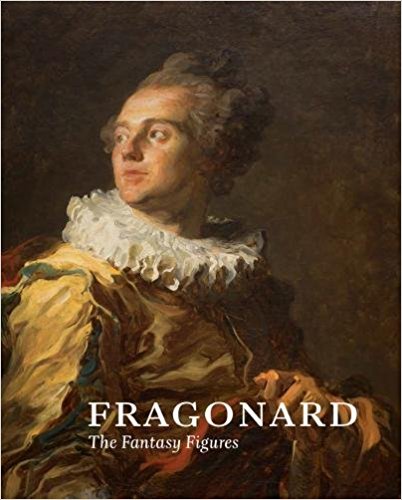
Jean-Honoré Fragonard (1732–1806) was a French painter and printmaker whose late Rococo style was distinguished by a remarkable facility, exuberance and hedonism. The starting-point for this beautifully illustrated book (and the exhibition which it accompanies) was the discovery in 2012 of a drawing by Fragonard depicting his so-called "fantasy figures." Fragonard's drawing presents thumbnail-sized sketches relating to 14 of his known 'fantasy-figure' paintings—rapidly executed, brightly coloured portraits of lavishly costumed individuals, including Young Girl Reading (c.1770) in the collection of the National Gallery of Art, Washington. The book assembles Fragonard's fantasy figures alongside his original sketch for the first time. It presents scientific research into the mysterious series and examines the 18th-century Parisian world of new money, unexpected social alliances and extravagant fashions from which these unique paintings emerged.
Filled with beautiful works by Edgar Degas, Mary Cassatt, and other Impressionist painters, this richly illustrated book showcases artistic portrayals of France's millinery trade during the Belle Époque. Filled with beautiful works by Edgar Degas, Mary Cassatt, and other Impressionist painters, this richly illustrated book showcases artistic portrayals of France's millinery trade during the Belle Epoque. Though best known for his depictions of dancers and bathers, Edgar Degas repeatedly returned to the subject of millinery over the course of three decades. In masterpieces such as The Millinery Shop (1879–86) and The Milliners (ca. 1898), he captured scenes of milliners fashioning and women wearing elaborate, colorful hats. Featuring sumptuous paintings, pastels and preparatory drawings by Degas, Cassatt, Manet, Renoir and Toulouse-Lautrec, among others, this generously illustrated book surveys the millinery industry of 19th-century Paris. Peppered throughout with photographs, posters and prints of French hats, this book includes essays that explore Degas's particular interest in the millinery trade; the tension between modern fashion and reverence for history and the grand art-historical tradition; a chronicle of Parisian milliners from Caroline Reboux to Coco Chanel; and examples of how the millinery trade is depicted in literature. Brilliantly linking together the worlds of industry, art and fashion, this groundbreaking book examines the fundamental role of hats and hat-makers in 19th-century culture.
Praised by Albrecht Dürer as being "the best in painting," Giovanni Bellini (ca. 1430–1516) is unquestionably the supreme Venetian painter of the quattrocento and one of the greatest Italian artists of all time. His landscapes assume a prominence unseen in Western art since classical antiquity. Drawing from a selection of masterpieces that span Bellini's long and successful career, this exhibition catalogue focuses on the main function of landscape in his oeuvre: to enhance the meditational nature of paintings intended for the private devotion of intellectually sophisticated, elite patrons. The subtle doctrinal content of Bellini's work—the isolated crucifix in a landscape, the "sacred conversation," the image of Saint Jerome in the wilderness—is always infused with his instinct for natural representation, resulting in extremely personal interpretations of religious subjects immersed in landscapes where the real and the symbolic are inextricably intertwined.
This volume includes a biography of the artist, essays by leading authorities in the field explicating the themes of the J. Paul Getty Museum's exhibition, and detailed discussions and glorious reproductions of the twelve works in the show, including their history and provenance, function, iconography, chronology and style.
A century after his death, Viennese artist Gustav Klimt (1862–1918) still startles with his unabashed eroticism, dazzling surfaces, and artistic experimentation. This monograph gathers all of Klimt's major works alongside authoritative art historical commentary and privileged access to the artist's archive with some 179 letters, cards, writings and other documents.
With top quality illustration, including new photography of the celebrated Stoclet Frieze, the book follows Klimt through his prominent role in the Secessionist movement of 1897, his candid rendering of the female body, and his lustrous "golden phase" when gold leaf brought a shimmering tone and texture to such beloved works as The Kiss and Portrait of Adele Bloch-Bauer I, also known as The Woman in Gold.
Through luminous spreads and carefully curated details, the monograph traces the repertoire of Japanese, Byzantine and allegorical stimuli that informed Klimt's flattened perspectives, his symbolic vocabulary, and his mosaic-like textures. Drawing upon contemporary critics and voices, the book also examines the art world's polarized reception to Klimt's pictures as much as his own stylistic trajectory. From his landscape painting to erotic works to the controversial ceiling for the Great Hall of the University of Vienna, we see how Klimt's admixture of tradition and daring divided the press and public, becried by some as a pornographer, hailed by others as a modern maestro.
A comprehensive and breathtakingly illustrated presentation of the genius of Michelangelo by the world's leading expert on the artist.
The Italian Renaissance master Michelangelo Buonarroti (1475–1564) was especially celebrated for his disegno, a term that embraces both drawing and conceptual design. Featuring more than 200 drawings as well as paintings, sculpture and architectural plans and views, this authoritative examines Michelangelo as "the divine draftsman and designer" whose work, according to Giorgio Vasari, embodied the unity of the arts. Carmen C. Bambach delivers a thorough and engaging narrative of the artist's long career, beginning with his training under Ghirlandaio and Bertoldo and ending with his 17-year appointment as chief architect of St. Peter's Basilica at the Vatican.
In each thematic chapter, related drawings and other works are illustrated and discussed together, many for the first time, to provide new insights into Michelangelo's creative process. In addition to St. Peter's, other featured projects include the Sistine Chapel ceiling, the Tomb of Pope Julius II, and the architecture of the Campidoglio in Rome. Michelangelo's theories of art are also explored, and new consideration is given to his personal life and affections and their effect on his creative output. Magnificent in every way, this book will be the foremost publication about this remarkable artist for many years.
Born in Paris to British parents, Alfred Sisley (1839–1899) abandoned his business studies early on in order to pursue training as a landscape artist and has become admired for his characteristic subtlety and highly restrained approach to painting. This beautiful publication offers an overdue reevaluation of Sisley, one of Impressionism's most distinctive yet undervalued figures. An artist of unparalleled sensitivity, Sisley maintained a strong commitment to creating his works outdoors, skillfully recording the nuances within the landscapes of northern France and rendering the effects of the changing light and weather patterns along specific areas of the river Seine in a truly remarkable fashion. Exploring the artist's relationship to his fellow Impressionists as well as to his influences, including J.M.W. Turner, 17th-century Dutch art, and Japanese prints, and showcasing rarely seen privately owned works, this volume celebrates Sisley's unique virtuosity as an observer of the natural world.
This gorgeously produced monograph focuses on the period during which Giorgio Morandi (1890–1964) developed and refined his investigations of serial, reductive and permutational forms and compositions, a body of work that has had a profound influence on 20th-century contemporary art and painting. Included here are four of the ten iconic "yellow cloth paintings," a series featured prominently in the historic 1998 exhibition at the Peggy Guggenheim Collection in Venice, and numerous late paintings by the Italian master. Lavishly reproduced, these immersive plates draw attention to the idiosyncratic perspectival and color-driven decisions that give the work its abstract power.
In addition to an essay by art historian Laura Mattioli, founder of the Center for Italian Modern Art (CIMA), the book includes a fantastic array of contributions by contemporary artists, including John Baldessari, Lawrence Carroll, Vija Celmins, Mark Greenwold, Liu Ye, Alexi Worth and Zeng Fanzhi. Each of the artists offers a personal response to Morandi's work, and to the 2015 David Zwirner exhibition this book accompanies. Working in different mediums across many disciplines, this diverse list of contributors is a testament to the reach of Morandi's paintings and their influence on contemporary art.
Edgar Degas's (1834–1917) relentless experimentation with technical procedures is a hallmark of his lifelong desire to learn. The numerous iterations of compositions and poses suggest an intense self-discipline, as well as a refusal to accept any creative solution as definitive or finite. Published in the centenary year of the artist's death, this book presents an exceptional array of Degas's work, including paintings, drawings, pastels, etchings, monotypes, counter proofs, and sculpture, with approximately sixty key works from private and public collections in Europe and the United States, some of them published here for the first time. Shown together, the impressive works represent well over half a century of innovation and artistic production.
Essays by leading Degas scholars and conservation scientists explore his practice and recurring themes of the human figure and landscape. The book opens with a study of Degas's debt to the Old Masters, and it concludes with a consideration of his artistic legacy and his influence on leading artists of the 20th and 21st centuries, including Francis Bacon, Frank Auerbach, Ryan Gander, David Hockney, Howard Hodgkin, R. B. Kitaj, Pablo Picasso, and Walter Sickert.
Hieronymus Bosch (1450–1516) is one of the most famous artists in the history of Netherlandish painting, if not the world. This new book, published on the 500th anniversary of Bosch's death, explores his best-known paintings and drawings, revealing them as never before in amazing full-page close-up details. Organized by characteristic themes in Bosch's work, such as faces, heaven and hell, the four elements, landscapes and creatures both fantastic and monstrous, it offers exceptional views of masterpieces like The Garden of Earthly Delights, The Haywain Triptych, The Temptation of St. Anthony, and The Seven Deadly Sins. Till-Holger Borchert, an expert on Netherlandish art, guides readers through the painter's work in clear and accessible language, and from less-familiar and surprising angles.
The work of Henri Matisse (1869–1954) reflects an ongoing belief in the power of brilliant colors and simple forms. Though famed in particular for his paintings, Matisse also worked with drawing, sculpture, lithography, stained glass, and collage, developing his unique cut-out medium when old age left him unable to stand and paint.
Matisse's subjects were often conventional: nudes, portraits and figures in landscapes, Oriental scenes, and interior views, but in his handling of bold color and fluid draftsmanship, he secured his place as a 20th-century master. It was Matisse's palette that particularly thrilled the modern imagination. With vivid blue, amethyst purple, egg-yolk yellow, and many shades beyond he liberated his work from a meticulous representation of reality and sought instead a "vital harmony," often referring to music as an inspiration or analogy for his work.
From vast patterned panels to simple and tender portraits, this book introduces the full reach and creativity of Matisse's career, spanning his early work within the Fauvism movement right through to his latter-year projects such as Jazz and the Chapelle du Rosaire in Vence.
Vasari famously wrote that Giotto "recovered the true method of painting, which had been lost for many years before him," and indeed, he is traditionally considered a founder of the Italian Renaissance. Producing a series of commissioned works for the church and upper classes in his native Tuscany and surrounding regions, Giotto changed the course of European art by breaking away from the rigid, stereotyped figures of the Byzantine and medieval traditions. His innovation was to give his characters natural movement and expression. His great fresco cycles, such as the lives of the Virgin and Christ in the Scrovegni (or Arena) Chapel, Padua, are populated with realistic depictions of three-dimensional figures; secondary characters, both comic and tragic, display the range of the painter's wit and invention. And Giotto's treatment of perspective was just as revolutionary as his approach to the human form: the dramatic power of his scenes is heightened by the convincing illusionistic spaces in which he places them.
In this authoritative survey of Giotto's life and work, Francesca Flores d'Arcais draws on an impressive range of sources, from fourteenth-century documents to the most recent art-historical investigations. Her research leads her to important reattributions of Giottesque paintings and to new conclusions regarding the execution and dating of both famous and lesser-known works. In this second edition of her study, d'Arcais also discusses the earthquake of September 26, 1997, that damaged the frescoes of the Upper Basilica of San Francisco in Assisi, some of which are attributed to the young Giotto; she explains not only the extent of the damage, but also the art-historical insights that emerged from the subsequent restoration effort.
More than three hundred illustrations, most in full color and some on double gatefold pages, reproduce all of Giotto's important frescoes in exquisite detail, as well as his moving crucifixes and jewel-like polyptychs. These splendid images and d'Arcais's insightful text, now, for the first time, in an affordable paperback edition, make this the definitive monograph on the greatest of trecento masters.
This landmark volume is a comprehensive survey of the portrait drawings, paintings and prints of Anthony van Dyck (1599–1641), one of the most celebrated portraitists of all time. His supremely elegant style and ability to convey a sense of a sitter's inner life made him a favored portraitist among high-ranking figures and royalty across Europe, as well as among his fellow artists and art enthusiasts.
Showcasing the full range of Van Dyck's fascinating international career with more than 100 works, this catalogue celebrates the artist's versatility, inventiveness and influential approach to portraiture. Works include preparatory drawings and oil sketches that shed light on Van Dyck's working process, prints that allowed his work to reach a wider audience, and grand painted portraits. Some of the masterpieces are drawn from the exceptional holdings of The Frick Collection, while other works are presented here for the first time. Also included are drawings by some of Van Dyck's contemporaries—including his teacher Peter Paul Rubens—that illuminate the lineage of his working method. With insightful contributions by a team of international scholars, this unparalleled study of Van Dyck offers a compelling case for the distinctiveness and importance of the artist's work.
A beautiful volume that brings to light the forgotten Le Nain brothers, a trio of 17th-century French master painters who specialized in portraiture, religious subjects, and scenes of everyday peasant life.
In France in the 17th century, the brothers Antoine (c. 1598–1648), Louis (c. 1600/1605–1648), and Mathieu (1607–1677) Le Nain painted images of everyday life for which they became posthumously famous. They are celebrated for their depictions of middle-class leisure activities, and particularly for their representations of peasant families, who gaze out at the viewer. The uncompromising naturalism of these compositions, along with their oddly suspended action, imparts a sense of dignity to their subjects.
Featuring more than sixty paintings highlighting the artists' full range of production, including altarpieces, private devotional paintings, portraits and the poignant images of peasants for which the brothers are best known, this generously illustrated volume presents new research concerning the authorship, dating and meaning of the works by well-known scholars in the field. Also groundbreaking are the results of a technical study of the paintings, which constitutes a major contribution to the scholarship on the Le Nain brothers.
John Singer Sargent: Figures and Landscapes, 1914–-1925: The Complete Painting
by Richard Ormon2017
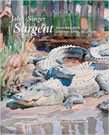
The last in a series of books devoted to the work of John Singer Sargent (1856–1925), this volume covers the figure and landscape works that Sargent produced between 1914 and 1925. The story begins with the artist painting with friends on vacation in Austria in the summer of 1914, unaware that war was about to be declared. The following year, he began working in London on his ideas for the murals at the Boston Public Library and the Museum of Fine Arts, Boston, before spending two years in Boston and exploring other parts of America. While in Florida to paint a portrait of John D. Rockefeller, he produced a group of uniquely Floridian watercolors that are breathtaking arrangements of color, form and light. In July 1918 he accepted an invitation from the British government to travel to the Somme battlefields as an official war artist. This experience led him to produce a remarkable group of works depicting troop movements, off-duty soldiers relaxing, and the studies for his epic canvas, Gassed. Sargent returned to Boston in 1921 and 1922 to complete his mural projects, and visits to Maine and New Hampshire yielded numerous watercolors. Chapters on Sargent's materials and the framing of his pictures complete this remarkable project.
Unlike the work of his contemporaries Rubens and Caravaggio, who painted on a grand scale, seventeenth-century Flemish painter Jan Brueghel's tiny, detail-filled paintings took their place not in galleries but among touchable objects. This first book-length study of his work investigates how educated beholders valued the experience of refined, miniaturized artworks in Baroque Europe, and how, conversely, Brueghel's distinctive aesthetic set a standard—and a technique—for the production of inexpensive popular images.
It has been easy for art historians to overlook the work of Jan Brueghel, Pieter's son. Yet the very qualities of smallness and intimacy that have marginalized him among historians made the younger Brueghel a central figure in the seventeenth-century art world. Elizabeth Honig's thoughtful exploration reveals how his works—which were portable, mobile and intimate—questioned conceptions of distance, dimension and style. Honig proposes an alternate form of visuality that allows us to reevaluate how pictures were experienced in seventeenth-century Europe, how they functioned, and how and what they communicated.
Elisabeth Louise Vigée Le Brun (1755–1842) was one of the greatest 18th-century French painters and among the most important women artists of all time. Celebrated for her expressive portraits of French royalty and aristocracy, especially of her patron and friend Marie Antoinette, she exemplified artistic success and personal resourcefulness in an age when women were rarely allowed either. Forced to flee France during the Revolution, Le Brun traveled throughout Europe for sixteen years, painting royal and noble sitters in the courts of Naples, Russia, Austria, Poland and Germany. She returned to France in 1805, under the reign of Emperor Napoleon I, where her artistic career continued to flourish.
Alongside 85 of her finest paintings and drawings from international museums and collections, this handsome volume details Vigée Le Brun's story, portraying a talented and intelligent artist who was able to negotiate a shifting political and geographic landscape. Providing further context for the life of this extraordinary individual, essays by international experts address topics such as her travels in exile and the position of women artists in the Salons.
Edvard Munch: Archetypes brings together a thematic selection of 80 works—in full-page, museum-quality reproductions—that examine the painter's long and prolific career and reveal his ability to synthesize the obsessions of modern humanity. This is the first book to emphasize the wide spectrum of emotional archetypes through which Munch reveals various existential obsessions such as love, desire, jealousy, angst and death, and states of mind including melancholy, passion and submission. Each section of the volume is structured around these archetypes, showing the representation of the human figure in various settings: the seaside, the sickroom, the "green room," the woods, the night and the artist's studio. It combines early works with late versions and paintings with graphic works so as to underscore the thematic and existential circularity of Munch's oeuvre.
The art of Edvard Munch (1863–1944), who is today considered one of the forefathers of modern art along with Cézanne, van Gogh and Gauguin, developed from a distinctive blend of tradition and experimentation. From the beginnings of his career, the Norwegian artist created a particular mythology for modern times that was in close step with the art, literature and thought of his contemporaries. His aesthetic language, which evolved from Symbolism to Expressionism, deployed various strategies to construct a pictorial narrative of the most universal subjects.
A bird-monster devouring sinners, naked bodies in tantric contortions, a pair of ears brandishing a sharpened blade: with nightmarish details and fantastical painterly schemes, Netherlandish visionary Hieronymus Bosch (c. 1450–1516) secured his place as an art historical magnet. 500 years on from his death, his extraordinary works continue to enthrall scholars, artists, designers and musicians.
This large-scale TASCHEN monograph presents the complete Bosch oeuvre, celebrating the artist's staggering compositional scope and most bizarre and intricate details through full-page reproductions, abundant details, and a fold-out spread drawn from The Last Judgment. With guidance from art historian and Bosch expert Stefan Fischer, we explore the many compelling elements that populate each scene, from hybrid creatures of man and beast, to painterly assaults on the body, and a pictorial use of proverbs and idioms. Particular attention is given to Bosch's most famous work, the mesmerizing, terrifying triptych The Garden of Earthly Delights.
The Italian painter known as Caravaggio (1571–1610) claims a place among the most revolutionary figures in the history of art. His intense naturalism, almost brutal realism, and dramatic use of light had a wide impact on European painters, including Orazio Gentileschi, Valentin de Boulogne, and Gerrit van Honthorst. Each of Caravaggio's followers absorbed something different from his work, propagating his stylistic legacy across Europe.
In this extensively illustrated catalogue, Letizia Treves introduces the international Caravaggesque movement and traces the distinct artistic personalities of its leading players. Even now, Caravaggio's name overshadows the other talented artists who adopted his approach to narrative painting: the use of theatrical lighting to illuminate a story encapsulated in a single, dramatic moment. Treves explains the innovative and unifying features of these painters' work and how, despite resistance to their style and subject matter, many outstanding Caravaggesque pictures found their way into important collections.
Accompanying the first ever exhibition devoted to the Dutch painter and draughtsman Adriaen van de Velde (1636–1672), this is also the first monograph on the artist—one of the finest of the Dutch Golden Age. The Art Newspaper has already billed the exhibition as one of their top picks of 2016.
A Dutch Italianate, Adriaen Van de Velde represents a point of artistic cross-communication
across borders, fusing agricultural landscapes in Holland with mythological Arcadian scenes in Italian settings. He died at the early age of 35, and yet he produced a great number of masterpieces that earned him tremendous posthumous fame in the 18th and 19th centuries, when he was one of the most sought-after names among collectors in Germany, France and
England. Compared to Mozart's chamber music by the renowned art historian Wolfgang Stechow (1896–1974), Van de Velde's works are delicate and carefully composed and demonstrate his mastery of lighting effects as well as the human figure.
His father Willem van de Velde the Elder and brother of the Younger were both marine painters, who in the winter of 1672–73 moved from Leiden to England to work in the service of King Charles II. Adriaen, by contrast, almost certainly never traveled outside his native country and chose to paint landscapes rather than seascapes. His meadows, Italianate views, beaches, dunes, forests, winter scenes and portraits in landscape settings and are among the very best that the Dutch Golden Age has produced. Moreover, the artist's drawings are widely considered to be a high point in 17th-century Dutch draughtsmanship. Yet despite his fame in previous centuries and the exquisite quality of his work, there has never been an exhibition devoted to the artist.
As well as bringing together 60 of his finest works, the publication will reunite the paintings with their preparatory studies in seductive red chalk or pen and ink for the first time, making it possible to follow very precisely the various phases in the artist's creative process—perhaps more so than is possible for any other Dutch artist of the period. The publication will therefore offer not only a survey of the artist's oeuvre but also a rare glimpse of a seventeenth-century Dutch landscape painter at work, from conception to completion.
J. M. W. Turner is one of the most famousand most mysterious of artists. His paintings are among the masterpieces of Western art, and the range of his work and the originality of his technique make him a giant. He kept his private life a secret, and his contradictory personality, his love of mystification, and his revolutionary manner of painting all fascinated his contemporaries and still arouse our curiosity today.
Andrew Wilton's knowledge and enthusiasm uniquely qualify him to introduce us to the artist's life, and he concentrates here on original sources: Turner's writings, in the form of letters, notes and verse; impressions recorded by his contemporaries; and reviews of his exhibited works. A comprehensive illustrated chronology covers Turner's travels, exhibitions and projects, and includes portraits of his friends and patrons, views of places with which he was associated, and works by other artists who played a crucial role in forming his style and thought.
For a few decades in the first half of the 16th century, the tremendous quality of the paintings and drawings produced in Parma (and by artists from the city working elsewhere) made the city more than a match for its rivals. The two reasons for this brief golden age were Correggio (1489–1534) and Parmigianino (1503–1540). Correggio moved to Parma in the late 1510s, by which time he was already a highly accomplished artist; he was to remain based in the city for the rest of his life. This book gathers a selection of his paintings and drawings that emphasize his extraordinary emotional power, the range of his religious imagery and his mythological works. Parmigianino, whose peripatetic career took him to Rome and Bologna, is represented by a similarly important group of paintings, but in addition to religious and mythological subjects, his spectacular achievements as a portraitist are a central focus.
This elegant volume is the first to be devoted to the young genius of Claude Monet (1840–1926). Bringing together the greatest paintings from his early career—including his first Salon-exhibited work, the Kimbell Art Museum's La Pointe de la Hève at Low Tide; Déjeuner sur l'Herbe (Luncheon on the Grass) and The Magpie from the Musée d'Orsay; and The Green Wave and La Grenouillère from the Metropolitan Museum of Art—it features essays by distinguished scholars, focusing on the evolution of Monet's own distinctive mode of painting. Through the 1860s, the young painter absorbed and transformed a variety of influences, from the lessons of the Barbizon school and his mentor Boudin to the challenges posed by his friends Manet, Pissarro, Renoir and Sisley. Artistic innovation and personal ambition shaped the work of the celebrated impressionist painter from the very start of his long and illustrious career.
Known fondly as "Robert des ruines" because of his penchant for painting ancient ruins, Hubert Robert (1733–1808) was one of France's most successful and prominent artists during his lifetime. This outstanding publication, which accompanies the first monographic exhibition of his work, illuminates Robert's remarkable artistic achievements and his lasting contributions to French visual culture. Robert's skills were manifold—he enjoyed great success as a painter, draftsman, interior decorator and garden architect. During his time in Rome, he fostered close professional bonds with artists such as Piranesi, Panini and Fragonard, while in Paris he flourished under the patronage of several wealthy French supporters including the Marquis de Marigny, brother of the famed Madame de Pompadour. Robert's work later addressed the demise of this glittering society through both ominous scenes of disaster and representations of vandalized royalist monuments. Upon his own release from imprisonment following the French Revolution, Robert completed a series of meditative variations on the Grande Galerie of the Musée du Louvre, of which he had been appointed curator in 1784. Thoroughly researched, this scholarly and beautifully produced publication will stand as the definitive book on Robert for many years to come.
Classics bring to life the fine craftsmanship and design of Phaidon books of the 1930s, 40s and 50s. Updated with a contemporary "classic" design, full color images and new introductions by leading specialists on the work of each artist, these elegantly crafted volumes revive the fine bookmaking of the first half of the twentieth century, making Phaidon Classics instant collectors' items.
A magnificent study of Raphael (1438–1520), one of the greatest painters of the Italian Renaissance, whose brief career produced such masterpieces as The School of Athens and The Three Graces. The large-format images bring to life Raphael's radiant colors and brushwork in the religious paintings of the Madonna and saints, mythological paintings, and portraits ranging from Pope Julius II to Baldassare Castiglione.
Craving pleasure as well as knowledge, Raphael Sanzio was quick to realize that his talent would only be truly appreciated in the liberal, carefree and extravagantly sensual atmosphere of Rome during its golden age under Julius II and Leo X.
Arriving in the city in 1508 at the age of twenty-five, he was entranced and seduced by life at the papal court and within a few months had emerged as the most brilliant star in its intellectual firmament. His art achieved a natural grace that was totally uninhibited and free from subjection. His death, at just thirty-seven, plunged the city into the kind of despair that follows the passing of an esteemed and much loved prince.
In this major new biography Antonio Forcellino retraces the meteoric arc of Raphael's career by re-examining contemporary documents and accounts and interpreting the artist's works with the eye of an expert art restorer. Raphael's paintings are vividly described and placed in their historical context. Forcellino analyses Raphael's techniques for producing the large frescos for which he is so famous, examines his working practices and his organization of what was a new kind of artistic workshop, and shows how his female portraits expressed and conveyed a new attitude to women.
This rich and nuanced account casts aside the misconceptions passed on by those critics who persistently tried to undermine Raphael's mythical status, enabling one of the greatest artists of all time to re-emerge fully as both man and artist.
This revelatory study of Georges Seurat (1859–1891) explores the artist's profound interest in theories of visual perception and analyzes how they influenced his celebrated seascape, urban and suburban scenes. While Seurat is known for his innovative use of color theory to develop his pointillist technique, this book is the first to underscore the centrality of diverse ideas about vision to his seascapes, figural paintings, and drawings. Michelle Foa highlights the importance of the scientist Hermann von Helmholtz, whose work on the physiology of vision directly shaped the artist's approach. Foa contends that Seurat's body of work constitutes a far-reaching investigation into various modes of visual engagement with the world and into the different states of mind that visual experiences can produce. Foa's analysis also brings to light Seurat's sustained exploration of long-standing and new forms of illusionism in art. Beautifully illustrated with more than 140 paintings and drawings, this book serves as an essential reference on Seurat.
Renowned during the 18th century for his exquisite portraits and pastels, not to mention his outlandish Orientalist outfits, Jean-Etienne Liotard (1702–1789) painted some of the most significant rulers and aristocrats in Europe, including the entire British royal family. A peripatetic artist, Liotard was born in Geneva and studied in Paris before traveling to Italy and then on to Constantinople. While there he painted local residents as well as British expatriates, and adopted the eccentric style of dress that, when he later visited London, saw him become known as The Turk. This volume illuminates the career of this unique but now little-known artist, showcasing his extraordinary works, including portraits, drawings and enamels.
Francisco de Goya y Lucientes (1746–1828) was one of the greatest portraitists of his time. The first large-scale book devoted to the topic, this handsome volume features portraits that shed light on Goya and his subjects, as well as on the politically turbulent and culturally dynamic era in which they lived. Whether portraying royalty, philosophers, military men, or friends, these works are memorable both for the insight they provide into the relationship between artist and sitter, and for their penetrating psychological depth.
Xavier Bray traces Goya's career from his beginnings at the Madrid court of Charles III to his final years in Bordeaux, played out against the backdrop of war with France and the social, political and cultural shift of the Enlightenment. More than 60 remarkable portraits, including drawings and miniatures, reveal the full range of Goya's technical and stylistic achievements, while also depicting sitters with a previously unparalleled humanity. His break with traditional, late-18th-century conventions allowed him to achieve a new modernity in portraiture that paved the way for artists such as Matisse and Picasso.
This volume offers the most comprehensive overview in print—and the first substantial English-language monograph in decades—on the great 17th-century Spanish painter Zurbarán. It spans his entire career, from his earliest commissions to key works from his mature period, plus works recently rediscovered over the past few years. A contemporary of Velázquez, Zurbarán developed an austere vision that combined exacting realism with a palpable mysticism. Though he was sometimes known as "the Spanish Caravaggio" for his harsh use of chiaroscuro, Zurbarán's particular achievement was his creation of a more austere quietism, and a less foreboding if more melancholy atmosphere—qualities which lent themselves ideally to such genres as still lifes and his portraits of monks and martyrs, and which also ensured his importance for early modernism (especially Cubism).
Examining this beloved painter's oeuvre across six themed sections, Zurbarán: A New Perspective includes work by a selection of his most talented pupils, and by his son Juan de Zurbarán, also a superb still-life painter.
Vincent van Gogh's story is one of the most ironic in art history. Today, he is celebrated the world over as one of the most important painters of all time, recognized with sell-out shows, feted museums, and record prices of tens of millions of dollars at auction.
Yet as he was painting the canvases that would subsequently become these sell-out modern masterpieces, van Gogh was battling not only the disinterest of his contemporary audiences but also devastating bouts of mental illness, with episodes of depression and paralyzing anxiety which would eventually claim his life in 1890, when he committed suicide shortly after his 37th birthday.
This comprehensive study of Vincent van Gogh (1853–1890) pairs a detailed monograph on his life and art with a complete catalogue of his 871 paintings.
Accompanying an exhibition at the Isabella Stewart Gardner Museum in Boston, this catalogue explores one of the most important but historically neglected painters of the Italian Renaissance, Carlo Crivelli (c. 1435–c. 1495). Venetian by birth but shaped by formative experiences in Padua, Crivelli embarked on a career that spanned both sides of the Adriatic. His extraordinary success led to a virtual monopoly in the Marches, where he dominated the market for towering altarpieces and jewel-like paintings for private devotion in the second half of the fifteenth century. Pushing the boundaries between painting and sculpture, his works are distinguished by their radically expressive compositions, luxuriant ornamental display and bravura illusionism. Seven essays challenge the prevailing view of Crivelli as a provincial artist working in an anachronistic 'Gothic' style, investigate the remarkable facture of his paintings, and shed new light on his rediscovery by collectors. Repositioning Crivelli's contributions within wider developments in the history of western art, Stephen J. Campbell (Johns Hopkins University), C. Jean Campbell (Emory University), Thomas Golsenne (École Nationale Supérieure d'Art de Nice), and Alison Wright (University College London) reveal his artistic ambition. Crivelli is reevaluated as an experimental artist who masterfully manipulated the surfaces of his paintings into visionary encounters with the divine, forged a modern icon, and offered a powerful alternative to new models of painting associated with Florence. Gianfranco Pocobene (Isabella Stewart Gardner Museum) examines the technical facility that underpins Crivelli's dazzling pictorial effects and publishes the results of the first ever technical analysis on the Gardner's Saint George and the Dragon. Essays by Francesco De Carolis (Università di Bologna) and Oliver Tostmann (Wadsworth Athenaeum) investigate the painter's critical fortunes. The former explores the dispersal of Crivelli's works in nineteenth-century Italy and their role in shaping his modern reputation, while the latter examines the American taste for Crivelli in the early twentieth century. The catalogue reflects the iconographic range of his images. Entries written by a team of scholars in Europe and the United States include new insights and up-to-date bibliography for twenty-three paintings and Crivelli's only surviving drawing on paper.
Peter Paul Rubens (1577–1640) is undoubtedly the most influential of all Flemish painters. Himself indebted to Titian, Rubens became a role model to Van Dyck, Rembrandt and Velazquez, and influenced artists well beyond his time, including figures such as Cezanne, Picasso, Bacon and Freud. This sumptuous new volume explores Rubens's legacy thematically, through a series of sections devoted to violence, power, lust, compassion, elegance and poetry. Each section will link artists across the centuries in their references to Rubens, from Van Dyck and Watteau to Manet, Daumier, Renoir and Van Gogh, as well as Gainsborough, Constable and Turner.
Before reaching the tender age of 30, Michelangelo Buonarroti (1475–1564) had already sculpted David and Pietà, two of the most famous sculptures in the entire history of art. As a sculptor, painter, draftsman and architect, the achievements of this Italian master are unique—no artist before or after him has ever produced such a vast, multifaceted and wide-ranging œuvre.
This comprehensive book explores Michelangelo's life and work with a richly illustrated biographical essay, and a complete four-part inventory of his paintings, sculptures, buildings and drawings. Full-page reproductions and enlarged details allow readers to appreciate fine details in the artist's vast repertoire, while the book's biographical insights consider a previously unseen extent to Michelangelo's more personal traits and circumstances, such as his solitary nature, his thirst for money and commissions, his immense wealth, and his skill as a property investor. In addition, the book tackles the controversial issue of the attribution of Michelangelo drawings, an area in which decisions continue to be steered by the interests of the art market and the major collections.
This is the definitive work about Michelangelo for generations to come, to be delved into and put on display, with its slipcase neatly converting into a book stand.
This surprising study examines the extent to which Mary Cassatt influenced the work of her contemporary Edgar Degas. Edgar Degas's influence upon Mary Cassatt has long been acknowledged, but her role in shaping his artistic production and in preparing the way for his warm reception in America is fully examined for the first time. These two major figures of the impressionist movement shared a keen observer's eye, as well as an openness to experimentation. Despite differences of gender and nationality, they built a deep friendship based on mutual respect and admiration for each other's talents. Focusing on the critical period from the late 1870s through the mid-1880s, when Degas and Cassatt were most closely allied, this book brings together some seventy works in a variety of media to examine the fascinating artistic dialogue that developed between these two celebrated artists. Technical analysis provides new insight into the intersections between their art in terms of choice of media and methods as well as subject matter. The authors also examine the artists' participation in the unrealized collaborative impressionist publication Le Jour et la nuit, which resulted in some of their most exceptional prints. Another focus is a series of prints, pastels and paintings produced by Degas on the theme of Mary Cassatt at the Louvre. A number of works exchanged between the two artists serve as a tangible testament to the affinity between Degas and Cassatt and show both artists as collectors and champions of each other's art.
In his day, Rembrandt was better known as an etcher than as a painter. Looking at Rembrandt's prints requires a little time and patience from the viewer, but the rewards are enormous. Rembrandt moved expertly between genres, demonstrating his ingenuity, insight into human emotion and mastery of the etching medium in every image. The compositions are beautifully balanced despite a wealth of narrative detail. Every line has a purpose—nothing is accidental or left to chance.
Rembrandt Etchings is an accessible book that will guide you on your visual journey of discovery, and allow you to see why Rembrandt was the greatest of all 17th-century printmakers. You will learn a great deal about the technical aspect of printmaking, Rembrandt's choice of papers, his expertise in marketing his etchings, and prints are discussed per genre. The book contains 32 high-quality illustrations.
Written by the Dutch art historian Michiel Kersten, an expert in the field of Dutch 17th-century art.
The six glorious scenes that make up the Triumph of the Eucharist series by Peter Paul Rubens (1577–1640) are highlights of the Museo Nacional del Prado's superb collection of Flemish paintings. Completed in 1626, these brilliantly detailed sketches were painted at the behest of the Infanta Isabel Clara Eugenia in preparation for a series of monumental tapestries that are now considered among the finest made in Europe in the seventeenth century. Unfortunately, additions to the wooden supports, introduced after the paintings were created, made the panels considerably larger than Rubens intended and over time caused serious damage to the original sections. With the aid of the Getty Foundation's Panel Paintings Initiative, the panels have been restored and returned to their original dimensions by the Prado, and the magnificent oil sketches can once again be placed on public view. This lushly illustrated and illuminating volume provides new insight into the history of the Eucharist series of paintings and tapestries and attests to Rubens's exhilarating art.
Spectacular Rubens is published on the occasion of an exhibition of the paintings, on view at the Museo Nacional del Prado from March 25 through June 29, 2014 and at the J. Paul Getty Museum from October 14, 2014, through January 4, 2015.
Goya: Order and Disorder
by Stephanie Stepanek
2014

Francisco Goya has been widely celebrated as the most important Spanish artist of the late-eighteenth and early nineteenth centuries, the last of the old masters and the first of the moderns, and an astute observer of the human condition in all its complexity. The many-layered and shifting meanings of his work have made him one of the most studied artists in the world. Few, however, have made the ambitious attempt to explore his work as a painter, printmaker and draftsman across media and the timeline of his life. This book does just that, presenting a comprehensive and integrated view of Goya's most important paintings, prints, and drawings through the themes and imagery that continually challenged or preoccupied the artist. They reveal how he strove relentlessly to understand and describe human behavior and emotional states, even at their most orderly or disorderly extremes, in elegant and incisive portraits, dramatic and monumental history paintings, and series of prints and drawings of a satirical, disturbing and surreal nature. Derived from the research for the largest Goya art exhibition in North America in a quarter-century, this book takes a fresh look at one of the greatest artists in history by examining the fertile territory between the two poles that defined the range of his boundlessly creative personality.
Published to commemorate the 400th anniversary of El Greco's death and destined to become the dominant text on the artist
The Greek of Toledo is the catalog that will accompany the exhibition to be shown at the Museo de Santa Cruz in Toledo, Spain from March to June 2014, to mark the 400th anniversary of El Greco's death.
In addition to the works in the exhibition, this catalog also includes a comprehensive selection of masterpieces by the artist that will allow for greater knowledge and understanding of his oeuvre. With essays by Fernando Marías, Nicos Hadjinicolau, Richard L. Kagan and Joaquin Bérchez, this book will become the key reference on the artist.
A glorious survey of the work of Paolo Veronese, one of the most prolific and successful painters of the Italian late Renaissance. Veronese was born in Verona in 1528 and earned his fame in Venice. Together with Titian and Tintoretto, he is associated with some of the greatest Venetian art of the sixteenth century.
Working in a dynamic Mannerist style early in his career, Veronese quickly gained a reputation for his dignified depictions of classical elegance and grandeur. Known for his enormous feast scenes, frescoes and ceiling paintings, Veronese refined the use of color to enhance his illusionist effects: he has been called the greatest colorist who ever lived. In Venice, Veronese's mural and ceiling decorations for the Church of San Sebastiano, the Doge's Palace, and the Marciana Library earned him early acclaim. His later work became sought more widely: Velázquez purchased two mythologies for the Spanish Royal Collection. His The Wedding at Cana and The Feast in the House of Levi are among his best-known masterpieces.
This volume provides a sumptuous visual introduction to Veronese's oeuvre, with a concise and readable text that reasserts the place of one of the most cultivated and influential artists of the Renaissance.
300 illustrations
Published in conjunction with the most comprehensive exhibition ever devoted to Henri Matisse's paper cut-outs, made from the early 1940s until the artist's death in 1954, this publication presents approximately 150 works in a groundbreaking reassessment of Matisse's colorful and innovative final chapter. The result of research conducted on two fronts—conservation and curatorial—the catalogue offers a reconsideration of the cut-outs by exploring a host of technical and conceptual issues: the artist's methods and materials and the role and function of the works in his practice; their economy of means and exploitation of decorative strategies; their environmental aspects; and their double lives, first as contingent and mutable in the studio and ultimately made permanent, a transformation accomplished via mounting and framing. Richly illustrated to present the cut-outs in all of their vibrancy and luminosity, the book includes an introduction and a conservation essay that consider the cut-outs from new theoretical and technical perspectives, and five thematic essays, each focusing on a different moment in the development of the cut-out practice, that provide a chronicle of this radical medium's unfolding, and period photographs that show the works in process in Matisse's studio.
One of modern art's towering figures, Henri Matisse (1869–1954) was a painter, draftsman, sculptor and printmaker before turning to paper cut-outs in the 1940s. From the clashing hues of his Fauvist works made in the South of France in 1904–05, to the harmonies of his Nice interiors from the 1920s, to this brilliant final chapter, Matisse followed a career-long path that he described as "construction by means of color."
Rembrandt: The Late Works
by Jonathan Bikker et al.
2014

Published on the occasion of a major exhibition bringing together the best Rembrandt paintings from American collections. The great seventeenth-century Dutch artist Rembrandt van Rijn is one of the most important painters in the history of European art. This richly illustrated volume gathers some fifty of the finest paintings by the Dutch master and his followers from private and public collections across America, including the National Gallery of Art in Washington, D.C., and The Metropolitan Museum of Art, New York.
Rembrandt had an uncanny ability to depict light and shadow, and to capture the emotions of his sitters. In addition to his portraits, he is also known for historical scenes. Highlighting the authentic Rembrandts in America during the late nineteenth century's Gilded Age, a time when American tycoons cultivated a passion for collecting European masterpieces, the book also features fifteen to twenty works that were originally attributed to the master's hand but are now recognized as paintings by his successors, contemporary followers, and later imitators.
An introduction focusing on Rembrandt as a cultural phenomenon is followed by essays devoted to his life, the controversy associated with his workshop, and the pursuit of Rembrandt in America. Published in association with the Cleveland Museum of Art, the North Carolina Museum of Art, and the Minneapolis Institute of Arts.
When the prolific British painter Joseph Mallord William Turner (1775–1851) died at the age of 76, his contemporaries held a generally negative view of his recent work, describing it as indulgent, eccentric and even repulsive. But over the past century, a number of curators and critics have reassessed Turner's late paintings. Instead of finding his employment of shimmering color to evoke light unpleasant or unskilled, they have seen it as a precursor to the Impressionists and consider his use of abstraction to be distinctly modern.
In this elegantly conceived volume, leading experts on Turner consider these contrasting views of the artist in a groundbreaking exploration of his paintings. They examine his notes and sketchbooks to determine whether his health may have impacted his art and how Victorian views of old age influenced perceptions of the elderly artist. They also question the notion that Turner's late work articulated a conclusive, radical vision heedless of public reaction, for evidence makes clear that he had a firm idea of the art market in his day.
Fully illustrated in color, this book is published on the occasion of an exhibition on view at the Tate Britain, London, from September 15, 2014, through January 18, 2015; at the J. Paul Getty Museum from February 24 through May 24, 2015; and at the de Young Museum in San Francisco from June 20 through September 20, 2015.
Paolo Veronese is acknowledged as one of the giants of Venetian Renaissance painting. His artistic production was richly varied, extending from imposing altarpieces to smaller religious paintings for private clients, from grand portraits to sensual episodes drawn from the classical tradition. Veronese was also an outstanding draughtsman, and his graphic oeuvre ranged from preliminary sketches to highly finished chiaroscuro sheets. A foreigner in Venice, he created paintings for Venetian clients and settings, as well for the mainland and export abroad. Thus, Veronese's art was unusually versatile for its time.
This magnificently illustrated book will display this extraordinary versatility and examine Veronese's artistic practice, concentrating on works from North American collections. For a sixteenth-century painter, many of whose works are in fresco or on enormous canvases still in situ, Veronese is unusually broadly represented in North America. At the same time, the broad spectrum of Veronese as a painter and draughtsman has not been available to American audiences in over two decades. This publication authored by an international team of experts, will be a major contribution to Veronese studies.
Widely considered the central figure of fifteenth-century painting, Piero della Francesca is also the most modern of all Renaissance painters. To our post-Cubist eyes, Piero's most famous work, his fresco cycle "The Legend of the True Cross" at Arezzo in Tuscany, conjures nothing so much as Cézanne's Mont Sainte-Victoire paintings; his serene articulations of architecture and perspective bring other modern traditions and painters to mind, such as Giorgio de Chirico. But it was Philip Guston—a major exponent of Piero in the twentieth century—who most eloquently identified what magnetizes us in Piero: "A different fervor, grave and delicate, moves in the daylight of his pictures. Without our familiar passions, he is like a visitor to earth, reflecting on distances, gravity and positions of essential forms." Piero's exquisitely subtle palette has meant that he has not been well served by past monographs, which have been scant enough: the last two major overviews, by Ronald Lightbown and Carlo Bertelli, were both published in 1992. This new monograph, benefiting from subsequent advances in color reproduction, therefore constitutes the first in 20 years. Its 150 color plates reproduce all of his works, from the classic "Baptism of Christ" (1450) at the National Gallery in London to the astounding frescos done for Sigismundo Malatesta at the Tempio Malatestiano in Rimini. Particular focus is given to the "Legend of the True Cross" fresco cycle at the Basilica of St. Francis in Arezzo.
Perhaps the most enduringly influential painter of the Italian Renaissance, and the epitome of Venetian sensuality and color, Titian has inspired fanatical devotion in painters from Rubens to Velasquez, Rembrandt and beyond. With this majestic volume, published to accompany what will be the most important exhibition in Italy in 2013, he receives his most substantial monograph treatment in more than two decades. "The Concert" and "La Bella" (from the Palazzo Pitti); "Flora" (the Uffizi); "Charles V with a Dog" and the "Self-Portrait" (from the Prado); and the infamous "Flaying of Marsyas" (from the Kromeriz): these are just some of Titian's most celebrated paintings, all of which will be exhibited at the Scuderie del Quirinale in Rome, in an exhibition designed as the magnificent conclusion to a sweeping overview of Venetian painting. In this accompanying catalogue, Titian's entire artistic career is represented at the most detailed level, decade by decade, scrutinizing his masterly sense of color and the development of his brushwork, with information gleaned from new scientific analysis of works carried out for the occasion. Also included are entries and essays by some of the world's most illustrious experts on this great Venetian master.
A deeply researched and elegantly written study on Sir Joshua Reynolds (1723–1792)—Georgian England's most celebrated portraitist and the first president of the British Royal Academy of Arts—this lavishly illustrated volume explores all aspects of Reynolds's portraiture. Mark Hallett provides detailed, compelling readings of Reynolds's most celebrated and striking works, investigating the ways in which they were appreciated and understood in his own lifetime. Recovering the artist's dynamic interaction with his sitters and patrons, and revealing the dramatic impact of his portraits within the burgeoning exhibition culture of late-18th-century London, Hallett also unearths the intimate relationship between Reynolds's paintings and graphic art. Reynolds: Portraiture in Action offers a new understanding of the artist's career within the extremely competitive London art world and takes readers into the engrossing debates and controversies that captivated the city and its artists.
Famed for his focused observation of nature, Flemish painter Jan van Eyck (c. 1395–1441) studied fauna and flora in their natural environment and under carefully chosen lighting conditions, and then achieved a breathtaking and convincing realism in his paintings. Each panel is a collection of minuscule details rendered with superb clarity from foreground to background—or at least that is the impression at first glance. As this book reveals, that is precisely where Van Eyck's exceptional talent lay: He understood that the human brain is able to supplement visual perception where necessary. Here, details from Van Eyck's paintings are organized by such themes as nature, architecture, daily life, fabrics, glass, jewelry and mirrors, and portraits. Opening with a biographical note and an essay on the technique of oil painting on panel, the authors explain the significance of the individual details and how Van Eyck achieved his innovative artistic results. With a preface by contemporary painter Luc Tuymans, this book is an unprecedented look at the work of a popular master.
Today, it seems astonishing that the work of Edouard Manet (1832–1883), the master French painter, was controversial in his day. His subversive handling of both paint and subject matter, coupled with his detached gaze, shocked contemporaries—but established him as the father of modern painting. This remarkable book, published to accompany an important traveling exhibition, explores the artist's stylistic evolution in the context of his portraiture. The relationship between Manet's portraits and his genre scenes is presented for the first time, illustrated by such masterpieces as The Luncheon (In the Studio) of 1868, and In the Conservatory (M. and Mme. Guillemet) of 1879. Leading authorities consider such topics as the influence of 17th-century Dutch painters, parallels with Renoir, and links with early photography.
Elegance and Refinement: The Still-Life Paintings of Willem van Aelst
by Tanya Paul
2012

The paintings of Willem van Aelst (1627–1683) are known for their fine finish, innovative compositions, sumptuous subject matter, and rich, jewel-toned palette. Published on the occasion of an unprecedented traveling exhibition, this book celebrates Van Aelst's achievements and his significant impact on Dutch still-life painting.
Van Aelst masterfully depicted arrangements of fresh fruit and flowers, displays of dead game, and evocations of the forest floor, as well as elegant objects such as nautilus cups, distinctive silver vessels, and Venetian glassware. This book features twenty-five paintings from throughout his career. Catalog entries and a biographical essay are provided by Tanya Paul, James Clifton writes about the Medici court, Julie Berger Hochstrasser analyzes Van Aelst's choice of subject matter, Arthur K. Wheelock Jr. discusses Van Aelst's time in Amsterdam, and a team of conservators reveals his technical process.
Jean-Auguste-Dominique Ingres has long been recognized as one of the great painters of the modern era and among the greatest portraitists of all time. Over a century and a half of scholarly writing on the artist has grappled with Ingres's singular identity, his relationship to past and future masters, and the idiosyncrasies of his art. Ingres and the Studio: Women, Painting, History makes a unique contribution to this literature by focusing on the importance of Ingres's training of students and the crucial role played by portraits—and their subjects—for Ingres's studio and its developing aesthetic project. Rather than understanding the portrait as merely a screen onto which the artist's desires were projected, the book insists on the importance of accounting for the active role of portrait sitters themselves. Through careful analysis of familiar and long-overlooked works, Ingres and the Studio traces a series of encounters between painters and portrait subjects in which women sitters—such as the artist Julie Mottez, art critic, salonnière, and historian Marie d'Agoult, and tragic actress Rachel—emerge as vital interlocutors in a shared aesthetic project.
Leonardo: Revised Edition
by Martin Kemp
2011
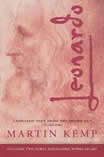
This fascinating exploration of Leonardo da Vinci's life and work identifies what it was that made him so unique, and explains the phenomenon of the world's most celebrated artistic genius who, 500 years on, still grips and inspires us.
Martin Kemp offers us exceptional insights into what it was that made this Renaissance man so special, and the "real" meaning behind such masterpieces as the Mona Lisa and the Last Supper. Tracing Leonardo's career in all its variety, we learn of his unfulfilled dreams, relationships with powerful patrons, and the truth about his views on God, humanity and nature. The famous notebooks are the key to understanding the secret of Leonardo's success and genius, Kemp shows, as they clearly reveal the workings of his mind and display the truly innovative and investigative nature of his creative vision. In these notebooks, over 20,000 pages of drawings and notes detail his incredible discoveries and inventions—from the workings of the human eye to designs for flying machines and giant crossbows. Bringing the story up to the present day, Martin Kemp considers what he means to us today, investigates the "Leonardo industry," and speculates about what he would be doing if he were alive today.
This updated edition of Martin Kemp's best-seller is the first book on Leonardo to include two newly discovered works, the most important such discoveries in over a hundred years.
Precisely rendered to dazzle the eye with their botanical accuracy, the sumptuous arrays of fruit and flowers by Dutch painter Jan van Huysum (1682–1749) were among the most avidly collected paintings of the eighteenth century. The arrangements were painstakingly executed over many months and commanded exceptionally high prices from admirers throughout Europe.
This delightful book explores two of Van Huysum's most important still-life paintings, Vase of Flowers and Fruit Piece, both in the collection of the J. Paul Getty Museum. Executed in 1722, they are among the first works to feature the innovations Van Huysum introduced to a beloved Dutch tradition. Like his seventeenth-century predecessors, Van Huysum combined flowers and fruits that flourished at different times of the year into a single bouquet. He worked directly from nature rather than from sketchbooks and animated the arrangements with crawling insects and butterflies. His inimitable technique resulted in an illusionism that continues to captivate us today. The book's sumptuous plates reveal the artist's highly nuanced palette, and his exuberant, asymmetrical arrangements reflect emerging rococo rhythms.
Painter and printmaker José Ribera (1591–1652, also known as Jusepe de Ribera) was among the earliest and best-loved exponents of Caravaggio's "Tenebrism," in which stark drama is drawn from extreme contrasts of light and shadow. Despite the tendency to identify him with the Spanish school, Ribera was quick to leave his native land, moving to Italy around 1611, and living in Rome and Naples; however, he often signed his paintings "Jusepe de Ribera, Spaniard." In these early years, Ribera practiced the Caravaggian style, creating many Tenebrist masterpieces (such as his 1630 portrait of Archimedes) before embracing more diffuse effects of lighting. With Poligrafa's beautifully printed introduction to Ribera, Javier Portús, Chief Curator of Spanish Baroque Painting at the Prado, opens up a new approach to Ribera's career, focusing on the early Tenebrist years in Rome and Naples.
Monet's Passion: Ideas, Inspiration, and Insights from the Painter's Gardens
by Elizabeth Murray2010

In celebration of the twentieth anniversary of the first publication of Monet's Passion: Ideas, Inspiration and Insights from the Painter's Gardens, this completely revised edition of Elizabeth Murray's best-selling book offers new text, new images, and new garden plans based on Claude Monet's spectacular gardens at Giverny.
A professional gardener and artist, Murray helped to restore the Giverny gardens in the 1980s and has since enjoyed privileged access to the site, where she returns annually to capture Monet's passion at its most radiant and riotous. In this redesigned, updated edition, Murray discusses the development and history of Monet's Giverny estate and brings new insight to Monet s approach to gardening and design. Emphasizing his keen understanding of color balance and his genius for maximizing the effects of light, Murray explores the favorite color combinations and techniques with which Monet experimented in both painting and gardening—each pursuit informing the other. Murray's lush photographs chronicle the present-day gardens, and a section titled 'Bringing Giverny Home' provides detailed Giverny-based garden plans that can be applied anywhere. Full-color illustrations of the gardens, a list of the plants originally used by Monet, and a plant cultivation section round out this immensely helpful guide to creating year-round beauty in one's own backyard.
140 pages with over 75 color photographs, along with color garden plans, transparent overlays for garden designs, and historical photographs. Size: 8.75 x 8.75 inches. Smyth-sewn casebound book with ribbon marker and jacket.
Hendrick Avercamp (1585–1634) was the first artist to specialize in painting winter landscapes that feature people enjoying themselves on the ice. Scenes of skating, sleigh rides, and outdoor games on frozen canals and waterways bring to life the energetic pastimes and day-to-day bustle of the Golden Age. He made the "ice scene" a genre in its own right. Within these winter scenes there is also a social narrative: unencumbered by status, all classes formed one community on the ice, where they went about their daily business and celebrated the delights of the winter conditions.
For the first time in many years this virtuoso artist receives the attention he deserves. The authors explore every aspect of Avercamp's work, from the weather conditions prevalent at the time to details of the clothes worn by the figures in his crowded scenes. Avercamp was also an outstanding draftsman who made individual figure studies that he utilized not only in his painted work but also in compositional drawings.
Ingres: Painting Reimagined
by Susan L. Siegfried
2009
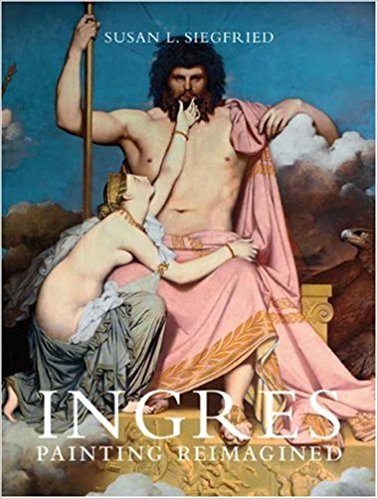
In this handsomely illustrated and elegantly written book, Susan L. Siegfried argues that the strangeness associated with Ingres's paintings needs to be located in the complex and richly invested nature of the work itself, as well as in the artist's very powerful―if often perverse―sense of artistic project. She shows that his major re-thinking of pictorial narrative—in his classical literary, historical and religious subjects—was as central to his achievement as his distinctive rendering of the female figure in classical nudes and portraits. He was engaged in a complex process of giving visual form to narrative, which he did in new and unusual ways that involved him in a close reading of the texts on which he drew, including authors such as Homer, Virgil, Ariosto and Dante, as well as religious narratives and stories about medieval and early modern French history.
For nearly four decades in the sixteenth century, the careers of Venice's three greatest painters—Titan, Tintoretto and Veronese—overlapped, producing mutual influences and bitter rivalries that changed art history. Venice was then among Europe's richest cities, and its plentiful commissions fostered an exceptionally fertile and innovative climate. In it, the three artists—brilliant, ambitious and fiercely competitive—vied with one another for primacy, employing such new media as oil on canvas, with its unique expressive possibilities, and such new approaches as a personal and identifiable signature style. They also pioneered the use of easel painting, a newly portable format that led to unprecedented fame in their lifetimes. With more than 150 stunning examples by the three masters and their contemporaries, this volume elucidates the technical and aesthetic innovations that helped define the uniquely rich "Venetian style," as well as the social, political and economic context in which it flourished. Essays range from examinations of seminal new techniques to such crucial institutions as state commissions and the patronage system. Most of all, by concentrating on the lives and careers of Venice's three greatest painters, Titian, Tintoretto, Veronese paints a vibrant human portrait—one brimming with savage rivalry, one-upsmanship, humor and passion.
The Arnolfini Portrait, depicting the wedding of a young couple, is one of the most famous paintings of the Early Renaissance. With its unprecedented precision and masterful use of color (down to the most minute details reflected in the background mirror), the painting is a testament to the mastery of Flemish painter Jan van Eyck (c. 1390–1441), leader of the Early Netherland School. Though he cannot be credited, as many have claimed, as the inventor of oil painting, his use of the medium was highly innovative, allowing for great intensity and depth of color. Often imitated but never equaled, van Eyck left an indelible impression on Renaissance art and paved the way for future realist painters.
The Dutch Italianates: 17th-century Masterpieces from Dulwich Picture Gallery
by Ian A.C. Dejardin2008

Throughout the 17th century a steady stream of Dutch painters made the arduous journey to Italy, the acknowledged "home of art." Where artists of other nationalities studied the great masters of the Renaissance and the contemporary painters of the Baroque, the Dutch were electrified by the magic of Italy itself—its light, people, colors and landscape. In their paintings they recorded the glittering distances of the Roman campagna, the ruins of earlier civilizations, and the colorful characters of the streets and countryside. This volume celebrates the sheer beauty of the Dutch Italianate vision, and the virtuosity, observation and humor of these remarkable artists.
Rembrandt and Caravaggio
by Taco Dibbits, Duncan Bull, Volker Manuth, Carel van Tuyll van Serooskerken, Margriet van Eikema Hommers and Ernst van de Wetering2006
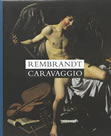
Rembrandt - Caravaggio highlights the two geniuses of Baroque painting: Rembrandt, the pre-eminent artist of the Dutch Golden Age, and his Italian counterpart Michelangelo Merisi (also known as Il Caravaggio). Both artists are considered revolutionary innovators in Northern and Southern European art, respectively. With their origins in different painting traditions, each developed an original and striking visual language. The juxtaposition in pairs of paintings by the two artists intensifies the comparison of their work.
Although they never met—Caravaggio (1571–1610) died four years after the birth of Rembrandt van Rijn (1606–1669)—many parallels can be drawn between the two master painters and their oeuvres. This is the first publication to comprehensively compare the works of Rembrandt with those of Caravaggio. Exploring the use of contrasting colours and chiaroscuro, both artists achieved unexpected realistic detail.
Unsettling to their contemporaries, the realism of the works of Rembrandt and Caravaggio remains exceptionally compelling to this day. Both painters scrutinised humanity in their own way, amplifying the power and enigmatic qualities of major human themes, such as love, religion, sexuality and violence. Rembrandt and Caravaggio changed not only the course of painting, but also our perception of the world.
Turmoil and Tranquility: The Sea through the Eyes of Dutch and Flemish Masters, 1550–1700
by Jenny Gaschke2008

The National Maritime Museum is home to some of the finest 17th century Flemish and Dutch maritime paintings in the world. Turmoil and Tranquillity shows the breadth of the collection, beginning with the Flemish tradition, the development of distinctly Dutch seascapes, and the foundation of a Netherlandish school of maritime painting in Britain.
Willem Drost (1633–1659) was one of Rembrandt's most gifted pupils, and he is also considered one of the most mysterious. This book, the first ever devoted to this exceptional artist, unravels many of the mysteries of Drost's life and career. Curator and art historian Jonathan Bikker offers not only new archival evidence of the artist's date and place of death, but also a new assessment of Drost's place in the Rembrandt workshop and in the Venetian art world of the mid-17th century. Drost emerges as one of Rembrandt's most talented imitators and, despite his short career, an artist with a variety of faces.
The book features a meticulously researched and fully illustrated catalogue raisonné with 38 paintings now attributed to Drost (several formerly attributed to Rembrandt) and 35 other paintings today known only from old sale catalogues or reproductions. The author also discusses 32 paintings he rejects as Drost's work.
Werner Hofmann vividly demonstrates Caspar David Friedrich's extraordinary ability to reproduce the natural world in faithful detail, while at the same time imbuing it with spiritual and religious significance. Caught between the near and the distant, the finite and the infinite, his human figures find a space in which to engage in the thoughtful contemplation of nature and the divine.
Carefully placing the artist in a wider context, Hofmann examines contemporary judgments and influences on Friedrich's work. The beautiful illustrations include many of Friedrich's drawings and watercolors as well as over ninety of his works in oils. 193 illustrations, 150 in color.
John William Waterhouse (1849–1917) is among the most popular Victorian artists, and many of his paintings have become icons of femininity recognized the world over. With their glowing colour, compelling composition and Impressionist-inflected technique, these paintings are admired for their beauty, yet at the same time have the power to transport viewers into a romantic world of myth and legend.
Waterhouse's art reflects not only his distinctive ideal of female beauty, but also a lifelong fascination with the Romantic and Symbolist themes of passion, magic and transformation—spiritual, erotic and physical. These themes also reflect the complex and ambivalent attitudes of his age. Peter Trippi presents a new analysis of Waterhouse's enchantresses, martyrs and nymphs, at the same time presenting a fresh and thoroughly researched review of this surprisingly enigmatic artist's life and the circumstances in which he painted.
Like other Victorian artists, Waterhouse was neglected through much of the twentieth century, but today he is acknowledged as a crucial inheritor of the Pre-Raphaelite legacy. Peter Trippi's monograph provides a timely re-evaluation that combines a close reading of Waterhouse's imagery with a new appraisal of his unique and enduring qualities.
Jacob van Ruisdael: A Complete Catalogue of His Paintings, Drawings, and Etchings
by Seymour Slive2002
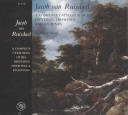
In this work, every painting, drawing and etching attributable to Ruisdael is scrupulously documented and perceptively discussed. The entries are not only well illustrated but are significantly complemented by reproductions of works that suggest both the master's sources and his influence. The paintings are grouped according to topographical or thematic content, with each "subgenre" preceded by a useful introductory essay. Various chronologies, concordances, appendixes and indexes amplify the volume's contribution to the study of 17th-century Dutch art.
Private Lives in Renaissance Venice: Art, Architecture, and the Family
by Patricia Fortini Brown2004

This book offers an engaging and original perspective on the private lives and material culture of patrician families in sixteenth-century Venice. Distinguished art historian Patricia Fortini Brown takes us behind the elegant façades of grand palaces built along the Venetian canals and examines the roles of both fine and applied arts in family life as well as the public messages that these impressive homes conveyed.
Illustrated with hundreds of varied and unusual images, the book provides a lively picture of the aristocratic lifestyle during a period of changing definitions of nobility. The author considers such wide-ranging themes as attitudes toward wealth and display, the articulation of family identity, and the visual culture of Venetian women―how they decorated their homes, dressed, undertook domestic tasks, entertained and raised their children. Recapturing the interplay between the public and private, she offers an account of Venetian households unequalled in vividness and detail.
Carel Fabritius 1622–1654
(Het complete oeuvre)
by Frederik J. Duparc, Ariane van Suchtelen and Gero Seelig
2004
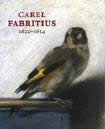
On 12 October, 1654 a powder magazine exploded in the city of Delft. This explosion had disastrous consequences not only for the city and its inhabitants but also for the art of painting, for its victims included one of the most talented artists of his time, Carel Fabritius. His studio, located a stone's throw from the powder magazine, was swept away, resulting in the loss of an unspecified portion of his oeuvre.
Nevertheless, his extant works, though small in number, are so high in quality and originality that they have earned Fabritius a place among the greatest of the Dutch Golden Age. His extraordinarily fluent brushwork made him Rembrandt's most brilliant pupil, and his bright palette and subtle treatment of light influenced Johannes Vermeer.
The first major book in English on one of the finest Dutch painters of the 17th century.
The Dutch painter Gerrit ter Borch (1617–1681) was a slightly older contemporary of Johannes Vermeer. Ter Borch's beautiful and evocative paintings were not only varied in subject but also unparalleled among his peers in capturing the elegance and grace of wealthy burghers, the shimmering surface of satin, the undulating rhythms of translucent lace cuffs, and the nuanced psychological interactions between figures in an interior scene. Indeed, ter Borch's genre scenes clearly influenced works later painted by Vermeer.
This lovely book, the first major English-language publication on ter Borch's paintings, presents a selection of some of the most outstanding works from each area of the artist's career: the remarkable early pictures of the 1630s, the midcareer genre paintings for which he is best known, and the small portraits that brought him prosperity throughout his life. Essays by noted experts on Dutch art discuss ter Borch's artistic development, the modern aspects of his paintings, and his renowned technique for painting satin.
This lavishly illustrated book is the catalogue for an exhibition at the National Gallery of Art, Washington (November 7, 2004 to January 30, 2005), and the Detroit Institute of Arts (February 28 to May 1, 2005).
Pieter Claesz 1596/97–1660: Master of Haarlem Still Life
by Pieter Biesboer, Martina Brunner-Bulst, Henry D. Gregory, Christian Klemm2004
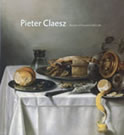
Pieter Claesz (1596/97–1660) is one of the most important still life painters of the Dutch 17th century. Born in Berchem, on the outskirts of Antwerp, he moved in 1620 to Haarlem, where he brought still life painting to unprecedented heights with his innovative approach to the genre. With an economy of means, he was able to infuse such commonplace objects as a pewter pitcher, a loaf of bread, or a simple herring with a sense of monumentality and enchanting beauty.
This richly illustrated book includes images of fifty of the finest paintings Claesz created over the course of his remarkable career. Stunning details further reveal his mastery in capturing both the texture of materials and the effects of light. The introductory essays examine the character and evolution of Pieter Claesz's style of painting, his place in the development of Dutch still life, and the various subjects that appear in his works.
Oil sketches by Peter Paul Rubens-created at speed and in the heat of invention with a colorful loaded brush-convey all the spontaneity of the great Flemish painter's creative process. This ravishing book draws from both private and public collections to present in full color 40 of Rubens's oil sketches. Viewers will find in these informal paintings an enchanting intimacy and gain a new appreciation of Rubens's capacity for invention and improvisation, and of his special genius for dramatic design and coloristic brilliance.
The book investigates the role of the oil sketch in Rubens's work; the development of the artist's themes and narratives in his multiple sketches; and the history of the appreciation of his oil sketches. It also explores some of the unique aspects of his techniques and materials. By revealing the oil sketches as the most direct record of Rubens's creative process, the book presents him as the greatest and most fluent practitioner of this vibrant and vital medium.
"The miracle of La Grande Jatte is its coincidence of critical distinction and popular celebration. High, low, mass and popular cultures meet in mutual delight, continuing to revel in the mysteries of that Parisian Sunday."—from "The Park in the Museum" by Neil Harris.
"Bedlam,"scandal," and "hilarity" were among the epithets used to describe the effect of what is now considered Georges Seurat's greatest work, and one of the most remarkable paintings of the nineteenth century, when it was first exhibited in Paris in 1886. A Sunday on La Grande Jatte—1884, an extensive landscape peopled with over forty figures, took the artist almost two years to complete. This sumptuous book, created to accompany a major exhibition at the Art Institute of Chicago, provides a fascinating, in-depth examination of the gestation, execution and influence of Seurat's masterpiece.
La Grande Jatte has been part of the Art Institute of Chicago's collection since 1926. Bringing together all known studies and drawings directly related to the painting, this volume provides a visual and contextual survey of Seurat's working methods and aesthetic priorities, as well as the evolutionary process that culminated in his singular achievement. Included are more than fifty-five preparatory works, ranging from rich conté crayon drawings to oil sketches on small wood panels to larger studies painted on canvas. In their quantity, intricacy and variety, these works reveal a compositional process that harks back to Old Master traditions and methods, which had been largely abandoned by Seurat's immediate predecessors, the Impressionists. The many studies attest to the artist's ambitions for his masterpiece and open up a broader context for understanding the work.
Seurat scholar Robert L. Herbert makes new revelations about the painting's relationship to its preparatory studies, stressing Seurat's empirical craftmanship. He compares La Grande Jatte to paintings by Monet, Renoir, Pissarro and Signac and analyzes the ways that twentieth-century critics, including Meyer Schapiro, T.J. Clark, and Linda Nochlin, have viewed the picture. He proposes that the enduring fascination of the famous canvas comes from Seurat's mixture of fashion and irony. Also giving new perspectives in this book, the noted cultural historian Neil Harris charts how and why La Grande Jatte attained its revered status at the Art Institute of Chicago and throughout the United States. Additionally, the exhibition's cocurators examine the painting's place in the museum's collection. Essays by Art Institute conservators show how Seurat transferred and altered figures from studies to final canvas and elucidate the exact nature of his pigments and brushwork. Color scientist Roy Berns traces the efforts to digitally recapture the original hues of Seurat's time-altered masterpiece. A landmark publication, this book provides dazzling proof of why La Grande Jatte is among the most frequently reproduced paintings in the world and why it continues to fascinate scholars and art lovers today.
For this publication, the master's oeuvre is divided into five groupings: Rubens' Beginnings, Rubens and Italy, The Middle-Class Patron, Official Commissions, and Secular Subject Matter. Through the inclusion of tapestries, particular attention is paid to the genesis of his art. Works such as Descent from the Cross, Laying in the Sepulchre, The Stoning of Saint Stephen, and three altarpieces created for the city of Lille's churches and convents are included. From this impressive homage to Rubens, the general reader, connoisseur and historian will all hopefully come to know Rubens better, and also be stimulated by the juxtaposition of works never presented in this way before.
A magnificent selection of drawings by one of the greatest artists of the seventeenth century.
For the Flemish artist Peter Paul Rubens (1577–1640), drawing was a fundamental activity. Ranging from delightful renderings of children and elegant portraits of noblemen and women to vigorous animal studies and beautiful landscapes, Rubens's drawings are renowned for their superb quality and variety.
This exquisite book presents-in beautiful full-color reproductions-more than one hundred of the finest and most representative of Rubens's drawings, from private and public collections around the world. Essays by Anne-Marie Logan and Michiel C. Plomp provide overviews of Rubens's career as a draftsman and of the dispersal of his drawings among collectors after his death. The authors discuss the various functions of Rubens's drawings as preparatory studies for paintings, sculpture, architecture, prints and book illustrations. The volume also includes a sampling of the artist's early anatomical studies and copies after antique sculpture as well as several sheets by other artists that Rubens retouched, restored, or reworked.
This publication accompanies an exhibition at The Metropolitan Museum of Art, New York (January 14 to April 3, 2005), the most comprehensive exhibition of Rubens's drawings ever held in the United States.
Flemish artist created for English patrons, his relationships with English courtiers beginning in 1616, and his nine-month diplomatic mission to London in 1629–1630. She focuses particular attention on the paintings Rubens created for the Banqueting House ceiling of Whitehall Palace-a project that is considered by many to be the most significant work of art ever commissioned by the English Crown.
The series of nine canvases for the Whitehall ceiling-beautifully illustrated in full color in this volume-celebrates the reign of Charles I's father, James I. Placing emphasis on the theme of peace, Rubens depicts not only King James's role as a peacemaker but also his own diplomatic concerns with ending hostilities between Spain and England. Rubens's iconographic scheme for the Whitehall ceiling presented English courtiers with a complex pictorial language not seen before in Great Britain. Donovan explores the artist's allegorical imagery and his explicit and implicit systems of meaning, providing fresh insights into Rubens's achievement as well as into the role that culture played in politics and society at the court of Charles I.
This extraordinary exhibition catalogue explores the rare works of one of the most enigmatic painters of the Renaissance, Zorzi da Castelfranco-universally known as Giorgione (Castelfranco Veneto, 1478-Venezia, 1510)-examining 15 out of an oeuvre of his 25 attributed paintings.
Fellow student of Titian under Giovanni Bellini in Venice, almost nothing is known of Giorgione's life except that he worked in Venice, undertook various important commissions in oil and fresco, and died of the plague in his early 30s. A major innovator, he is acclaimed as the father of modern Venetian painting of the sixteenth century. In his revolutionary brushwork he skillfully combined Leonardo's sfumato with the colors and the thin layers of paint favored by the Old Flemish masters to give a new dimension to light and color.
This monograph features masterpieces by Giorgione such as The Tempest, The Old Woman, The Nude, the recently restored Altarpiece of the Cathedral of Castelfranco, Christ Carrying the Cross, Three Philosophers and Laura as well as the only drawing by Giorgione View of Castel San Zeno at Montagnana and a Sitting Figure.
Some seminal examples of works by Bellini, Titian, Dürer and Cranach help to place Giorgione's art in context and to document his influence on later painters.
A team of international art historians and critics contribute original essays to the richly illustrated and well-documented book that features new discoveries in Giorgione's technique, an analysis of the results of restoration, and an updated bibliography.
This catalogue is published in conjunction with the major Fall 2003 exhibition organized by the Musée du Luxembourg in Paris. This important and unprecedented exhibition covers the entire career of the Florentine master with over 40 exceptional masterpieces gathered from major museums around the world.
Sandro Botticelli was one of the leading painters of the Florentine Renaissance who developed a highly personal style characterized by elegant execution, sense of melancholy and strong emphasis on line. This monograph presents a selection of Botticelli's paintings and drawings, including extraordinary masterpieces such as the Mystic Nativity, Saint Augustine in his Studio, Pallade and the Centaur, Annunciation and Madonna and Child, as well as a selection of works by other Renaissance painters like Leonardo da Vinci, Piero di Cosimo, Filippo and Filippino Lippi.
This catalogue, published to accompany a large-scale exhibition of El Greco's work at the Metropolitan Museum of Art and the National Gallery in London, presents a hearty portfolio of world-famous images alongside a comprehensive treatment of the artist's intellectual and religious foundations. Born Domenikos Theotokopoulos in Crete in 1541, El Greco moved to Venice in 1567, where he rapidly matured into one of the most daring artists of his time, known for his audacious color palette and ecstatic, elongated figures who often resemble rippling reflections in dark, cosmic waters. With his swooning, mystical compositions, El Greco remains a primary figure both in Renaissance painting and in the development of modern art, a favorite of such masters as Picasso and Cezanne. Treating the early stages of El Greco's work, as well as his lesser-known experiments in sculpture, this authoritative, comprehensive catalogue adds yet another chapter to the artist's permanent record as a looming figure in the history of western art.
Leonardo da Vinci (1452–1519) possessed one of the greatest minds of all time; his importance and influence are inestimable. This XXL-format comprehensive survey is the most complete book ever made on the subject of this Italian painter, sculptor, architect, engineer, scientist and all-around genius. With huge, full-bleed details of Leonardo's masterworks, this highly original publication allows the reader to inspect the subtlest facets of his brushstrokes.
* Part I explores Leonardo's life and work in ten chapters, drawing upon his letters, contracts, diary entries, and writings. All of his paintings are presented and interpreted in depth, with The Annunciation and The Last Supper featured on fold-out pages.
* Part II comprises a catalogue raisonné of Leonardo's paintings, which covers all of his surviving and lost painted works and includes texts describing their states of preservation. Each and every painting that can be justifiably attributed to Leonardo is included here; thanks to new findings and scientific research, this is the first time his definitive painting oeuvre is being published.
* Part III contains an extensive catalogue of his drawings (numbering in the thousands, they cannot all be reproduced in one book); 663 are presented, arranged by category (architecture, technical, anatomical, figures, proportion, cartography, etc). Over half of the drawings included were provided by Windsor Castle, marking the first time that the Castle has allowed a publisher to reproduce so many of their drawings.
At the end of a program of restoration that lasted an incredibly short time, but for which preparations had been made down to the smallest detail over twenty years of scientific investigation, historical research, laboratory experimentation, essays, trials and monitoring, one of the most fundamental cornerstones and certainly the most dazzling incunbala of modern European painting has been reopened to the public.
Preceded by long and complex preparatory work on the building and the surroundings, the intervention of conservation on the mural decoration has made it possible to arrest the acceleration of the process of decay. This decay was chiefly the result of the combined action of damp and pollution, but had been further aggravated by the use of unsuitable restoration materials during the intervention carried out in the early sixties.
The result has been to render the revolutionary spatial layout of the work more legible, along with the formal values through which Giotto expressed himself, in particular the quality of his coloring, something that is usually (and inexplicably) undervalued.
But several genuine discoveries have also emerged, such as his use of the technique required to make mock marble ("marmorino" or "Roman stucco") and of oil to "bind" the white lead, which as a consequence has not undergone any process of alteration. This has revealed, at an unparalleled level (at least as far as our current knowledge is concerned), effects of sunlight or luminosity that it would be hard to regard as produced by chance.
Nicolas Poussin, perhaps the most famous French painter of the seventeenth century, lived and worked for many years in Rome. Yet he remained deeply engaged with cultural and political transformations occurring in France, argues Todd P. Olson in this original exploration of Poussin's paintings, their production, and their reception. Poussin's references to ancient literature and sculpture addressed a political elite-the Robe nobility-whose humanist education in classical antiquity equipped them to relate Greek and Roman history to contemporary events and to deploy ancient precedents in legalistic and political arguments. The painter's audience considered the hard-earned pleasures of his restrained, difficult pictorial style a benchmark of integrity as well as a criticism of the Regency's indiscriminate collecting practices and taste for foreign luxury. Poussin transformed the easel painting-its making and collection-into an expression of cultural and political commitments binding a community. Olson's fresh insights reveal the importance of this painter's work to a learned and powerful French constituency at a critical moment in French history and demonstrate that Poussin's famously timeless style was far more responsive to historical contingencies than has been previously recognized.
Bronzino
by Maurice Brock
2002
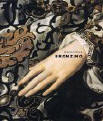
Agnolo Bronzino (1503–1572) was one of the leading representatives of Florentine mannerist painting. In this important new study, the eminent French art historian Maurice Brock provides a detailed analysis of this painter's remarkable oeuvre, taking into account the latest developments in scholarship and drawing on information about the artist's life that has recently come to light.
Eschewing a chronological approach, the author examines the paintings according to genre, focusing above all on Bronzino's portraits and religiouslittle-known paintings, and in particular on the little-known altarpieces and private devotional pictures. For Bronzino, art was the imitation of art, not the faithful imitation of nature. This book explains how he borrowed from other art forms, notable sculpture, and it looks at the relationship between the artist's paintings.
Raphael
by Pierluigi De Vecchi
2002

All of Raphael's most important paintings as well as a significant number of his drawings and engravings are reproduced, principally in color, in this splendid new tribute to one of the most admired artists of the Italian Renaissance.
In this lavishly illustrated book featuring some 300 illustrations, the author takes a fresh, critical look at the life and work of Rafaello Sanzio, or, as he signed certain paintings, Raphael Urbinas—in homage to his native city of Urbino. Described as "an artist touched by grace," Raphael is considered along with Michelangelo and Leonardo to be one of the greatest painters of the Italian Renaissance.
Father and daughter Orazio and Artemisia Gentileschi were unusual and gifted artists. Orazio Gentileschi (1563–1639) was the most talented follower of Caravaggio and a figure of international renown, active at the courts of Marie de' Medici in France, Charles 1 in England, and in Rome, Genoa and Turin. Artemisia (1593–1652/3) was the first Italian woman artist who was not only praised for her art by her contemporaries but whose paintings influenced the work of later generations. She is today a key figure in gender studies. Essays by an international group of art historians not only explore the development of each of these two painters individually but also compare their work, showing how both were influenced by their times and milieus. The book also includes new transcriptions of key parts of the notorious rape trial of Artemisia. This beautiful book is the catalogue for the first full-scale exhibition of the works of Orazio and Artemisia Gentileschi, held at The Metropolitan Museum of Art from 14th February to 12th May 2002, travelling thereafter to the St Louis Art Museum and to Rome.
Sargent's enduring popularity has prompted a thoughtful reappraisal by prominent art critic Carter Ratcliff, who shows us the surprising breadth of the artist's work. Never before has a book so thoroughly represented that variety: 110 lavish color plates and more than 200 halftones convey the brilliance of his portraits, the exuberance of his watercolors, the stately pomp of his murals. It is perhaps the watercolors that are most exciting to contemporary eyes—bold, spontaneous and vividly hued, they have a breathtaking immediacy.
Born in Florence in 1856 to American parents, Sargent spent a nomadic childhood before going to Paris to study painting. He learned quickly and by the 1880s had begun the steady climb to fame that ultimately placed him at the center of his world, with a circle of friends and rivals that included Henry James, Claude Monet, and James McNeill Whistler. When Sargent died in 1925, a childhood companion wrote in her memorial that "the summing up of a would-be biographer must, I think be: He painted." It is the strikingly beautiful results of that lifelong devotion to his art that glow throughout the pages of this incomparable book.
In an engaging and informed text, John T. Spike explores in detail Caravaggio's scandalous life and provocative work. Placing Caravaggio within the broad panorama of society and ideas at the turn of the seventeenth century, the author sets a richly detailed stage for an artist who has been called "the first modern painter." Caravaggio (1571–1610) reflected in his canvases his own desires and spiritual crises to an extent no one ever had imagined possible, and he shocked his contemporaries by portraying the saints and virgins of Christianity with the faces and bodies of his companions and lovers in Rome's demimonde.
Accompanying the book is a critical catalog on CD-ROM in which all of Caravaggio's extant paintings, as well as lost and rejected works, are thoroughly described. Each entry specifies the work's medium, dimensions, location and provenance, and provides an annotated bibliography of sources. Most of the entries conclude with a brief technical analysis. Much of this scientific data, of prime importance for attribution and dating, has not previously been published.
With its fresh insights, as well as judicious readings of the documents and the physical evidence of the paintings themselves, Caravaggio is the most thorough study on the artist to date, and it will no doubt remain a definitive monograph for many years to come.
A companion volume to a landmark exhibition presents the still-life paintings of the great Impressionist master Edouard Manet, including a wide variety of oil paintings, watercolors and prints, as well as an essay by Henri Loyrette, director of the MusTe d'Orsay, on the artist and his work.
In the quarter century since the last catalogue raisonné of Titian, more research has been carried out on the painter than in the whole of the previous four hundred years. New documentation has come to light, pictures have been cleaned and major exhibitions have allowed for scrupulous comparisons to be made. As a result, Titian's whole oeuvre has been reassessed, many old questions of attribution settled—and a few new ones raised.
Titian's place as one of the giants of Western culture has never been in doubt. He represents the culmination of the Venetian school, evolving a technique of free, spontaneous brushwork and a rendering of form through color that amazed his contemporaries and is now seen by some as foreshadowing Impressionism. In a long life of nearly ninety years he painted hundreds of canvases, ranging from moving and intense religious images, through penetratingly psychological portraits (including Charles V and Philip II of Spain) to sensuously erotic mythological scenes like Bacchus and Ariadne and the Venus of Urbino. Over 250 paintings are now attributed to him. All are illustrated here with detailed commentaries giving the circumstances of their commission, their subsequent history and stylistic analysis. Also included is an exhaustive bibliography. The fruit of many years' research, Titian is a monument of scholarship that will remain definitive for the foreseeable future.
M.C. Escher was born in 1898 in Leeuwarden (Netherlands). He received his first drawing lessons during secondary school from F.W. van der Haagen, who also taught him the block printing, thus fostering Escher's innate graphic talents.
From 1912 to 1922 he studied at the School of Architecture and Ornamental Design in Haarlem, where he was instructed in graphic techniques by S. Jessurun de Mesquita, who greatly influenced Escher's further artistic development. Between 1922 and 1934 the artist lived and worked in Italy. Afterward, Escher spent two years in Switzerland and five in Brussels before finally moving back to Barn in Holland, where he died in 1972.
M.C. Escher is not a surrealist drawing us into his dream world, but an architect of perfectly impossible worlds who presents the structurally unthinkable as though it were a law of nature. The resulting dimensional and perspectival illusions bring us into confrontation with the limitations of our sensory perception.
Widely acknowledged in his time as a premier painter of still life and genre scenes, Jean-Baptiste-Siméon Chardin (1699–1779) created unsentimentalized works that appeal to viewers today for their richness of feeling and simplicity of composition. This sumptuously illustrated book reproduces in full color 99 of Chardin's works and arranges them around five themes: Chardin's Beginnings and His First Still Lifes, Utensils and Household Objects, Genre Scenes, Chardin's Return to Still Life, and Pastels.
The contributors to the volume explore Chardin's work from many different angles, including the latest thinking on such lesser-known facets of his life and work as his use of ceramics and glass, his financial and property affairs, and the complex history of engravings of his paintings. Each of the five sections of the book has an introduction and a selection of Chardin's paintings accompanied on facing pages by complete provenance, exhibition and bibliographic information. The book also offers an extensive Chardin biography, an index of names and places, and an index of works.
One name in the history of the 20th century art stands out over all others: Pablo Picasso (1881–1973). As painter, graphic artist and sculptor, he displayed an inventive enterprise and innovative bravado that always kept him one step ahead of his contemporaries. As one of them, the painter Max Ernst, ruefully put it: "No one can touch Picasso. He is genius incarnate." The works selected here cover Picasso's entire output, from the less familiar to key masterpieces such as "Guernica," from the Blue and Rose Periods early in his career through his cubist and classicist phases and the formal experiments of the Thirties to his later involvement with politics in art.
Leonardo Da Vinci: The Complete Paintings
by Pietro C. Marani2000
This magisterial work-the most exquisite and luxuriously produced art monograph of the season-will immediately be recognized as the seminal volume on the paintings of the great Renaissance master Leonardo da Vinci. Not only does the quality of the reproductions far surpass those in previous books, but every one of Leonardo's magnificent paintings is included, along with preparatory drawings and studies for his most famous works, and a text by one of the world's leading experts on Leonardo.
Such beloved masterpieces as the Mona Lisa, The Madonna of the Rocks, and The Annunciation are all freshly photographed and showcased in greater detail than ever before. The newly restored Last Supper, lavishly reproduced as a full-color double gatefold, is seen here in all its richness of detail and tone. Scholar Pietro Marani explores Leonardo's fertile and original intellect and his astounding capacity for imbuing the human figure with emotion and sublime beauty and grace. Here, then, is a glorious art book that will be a gift to treasure for a lifetime.
In this book the native Venetian art scholar Stefania Mason takes the reader through a critical appraisal of the painter Vittore Carpaccio, focusing primarily on the four superb cycles of paintings he executed under commission from the city's confraternities between 1490 and 1520. What emerges from the author's insightful analysis is Carpaccio's unerring vision of the Venice of his times, deftly woven with complex allegorical allusions to create vast narrative tableaux that catered to the Venetian institutions' keen awareness of the power of imagery.
The study begins with the fabled" Life of St Ursula" cycle (1490-c. 1498), now in the Gallerie dell'Accademia in Venice, in which Carpaccio shows his skilled handling of perspective, endowing his canvases with a mixture of recognisable townscapes and imaginary landmarks of medieval stamp, whose visual cues include personages, gestures, customs and ceremonies in a rhythmical interweaving of reality and legend. Next comes the cycle executed for the Scuola di San Giorgio degli Schiavoni (1502-c. 1507), featuring Sts George, Triphun and Jerome, in which an errant knight and a hermit saint lead the observer into a mythical Orient. The masterpiece of the series is the "Vision of St Augustine," where the saint is alone in his study and the disembodied spirit of St Jerome enters by the window in the form of brilliant light illuminating the entire room with its domestic minutiae and panoply of humanistic attributes.
No longer "in situ" but dispersed among various museums are the last two series carried out by Carpaccio, this time with assistants: the "Life of the Virgin" cycle for the Scuola degli Albanesi (1502-c. 1507); and the setdepicting the" Life of St Stephen" for the "scuola" dedicated to the saint (1511–1520), a remarkable eulogy to stone and its manifold uses in building and sculpture (many of the confraternity's members were stonemasons). The selection of details and close analysis of Carpaccio's canvases afford a cogent visual guide and critical assessment of this great master of Renaissance painting.
This beautiful and compelling book shines new light on Fra Filippo Lippi`s life and career, from his first paintings as a friar to later works painted outside the monastery for the Medicis and other patrons. Focusing on the fascinating conjunction of Lippi`s work as a painter and his experiences as a Carmelite friar, Megan Holmes transforms our understanding of the artist and of art in fifteenth-century Florence.
In one concise volume, Wallace (art history, Washington Univ.) presents an accurately rendered life in intelligent, accessible prose. Though not footnoted, it consists of an overview with chronology of Michelangelo's life, followed by three extensive chapters on his major creations sculpture, painting and architecture each illustrated with stunning photographs and post-restoration reproductions. There are several fold-out sections, including a full-color Sistine ceiling and a complete diagram of all its segments. The commentary accompanying each work is engaging, and the layout is thoughtful and well planned, corresponding to the text. While there is a plethora of worthwhile books on Michelangelo, including those that focus in depth on a particular aspect, these sumptuous reproductions are some of the best on the market. They succeed in conveying Michelangelo's grandeur and magnificence gracefully and factually and, if budgetary conditions allow, should serve as a first-choice introduction to students and interested lay readers.
In this sumptuous, scholarly volume, the life of Dominican friar and artist Fra Angelico (1400–1455) is presented in the context of his work. Spike divides his book into three sections: life and work, color plates (with commentary), and a black-and-white catalog. He records the influences that shaped Angelico's life and work, notably the emergence of the Humanists, the Council of Florence (1440), Cosimo de' Medici, and the library at San Marco, and also presents important original findings on Angelico's fresco cycles in the cloister of San Marco, Florence. While there is not yet a catalogue raisonné, this difficult but rewarding book, with its many quality illustrations and fresh perspective, offers a complex overview for informed readers.
Few painters have had the impact of Masaccio (1401–1428), who helped lay the naturalistic foundations of modern art during a career that seems to have lasted only six years. In his useful synthesis, Spike, an independent scholar and curator living in Florence, successfully summarizes our current understanding of the artist's career. An intelligent introductory essay sorts out his oeuvre's chronology; elucidates aspects of Masaccio's enigmatic relationship with his inferior partner, Masolino; and clarifies his connection with the great innovators Giotto, Brunelleschi and Donatello. Commentaries accompanying the complete corpus of color illustrations allow further insights into the work's formal qualities and iconography, and a summary catalogue raisonné includes a compilation of early documentary sources, condition reports, and further scholarly discussion.
This rich and readable study places Rubens`s art and life in a modern context. In a provocative discussion of Rubens`s bacchic pictures, Svetlana Alpers takes up the relation between making art and national consciousness, the role played by gender in the formation of artistic taste, and the equivocal nature of human creativity.
Rubens has long been considered a remarkably successful, prolific and fleshly painter, a frequenter of the courts of the great. He is more admired than loved in our time, in contrast to the troubled figure of Rembrandt. This book takes up basic questions about Rubens's art and life, studies two of his bacchic paintings in detail, and discovers him in a less easy and more identifiably modern predicament. The first problem Alpers addresses is one of the relationship between making art and national consciousness. Why and how did Rubens paint the revelling Flemish peasants in the great Louvre Kermis? The circumstances, tone and feeling of this picture are investigated and found to involve deep ambivalences that are political, social and aesthetic.
The second problem is that of art and its consumption. Beginning with Watteau, the making of a Rubensian art is traced in the taste for Rubens in the eighteenth century in France, where many of the pictures he had kept for his own collection had found their way. In the writings of Roger de Piles and in the work of the painters to follow, art is made out of the viewing and discussing of art. A binary system of taste emerged for Rubens as contrasted with Poussin, and critical distinctions came to be fashioned in the binary terms of gender. Finally, Alpers considers creativity itself and how, as a man and as a painter, Rubens could have viewed his own generative talent. An analysis of his Munich Silenus—fleshy, intoxicated and, following Virgil's account, disempowered as a condition of producing his songs—reveals a sense of the creative gift as humanly indeterminate and equivocal. Fully illustrated with many drawings and paintings in color, this book complicates and deepens the interest of Rubens and of his works.
The deep and enduring friendship between Vincent and Theo Van Gogh shaped both brothers' lives. Confidant, champion, sympathizer, friend―Theo supported Vincent as he struggled to find his path in life. They shared everything, swapping stories of lovers and friends, successes and disappointments, dreams and ambitions. Meticulously researched, drawing on the 658 letters Vincent wrote to Theo during his lifetime, Deborah Heiligman weaves a tale of two lives intertwined and the extraordinary love of the Van Gogh brothers.
